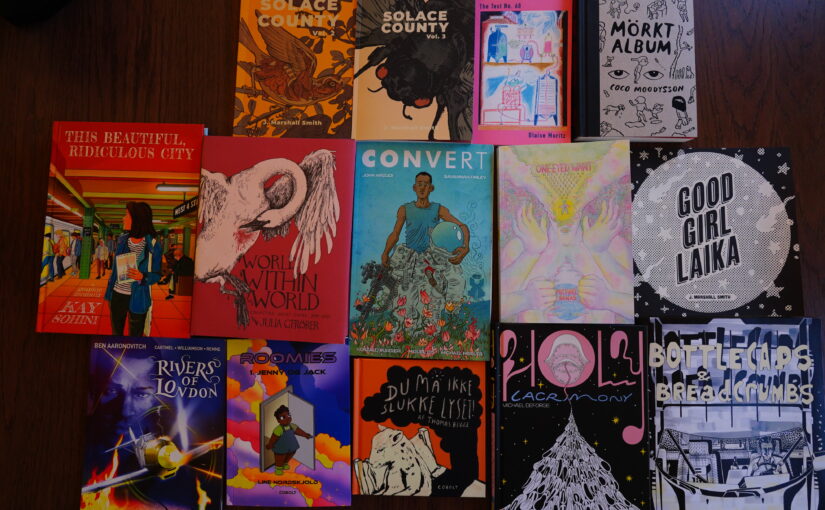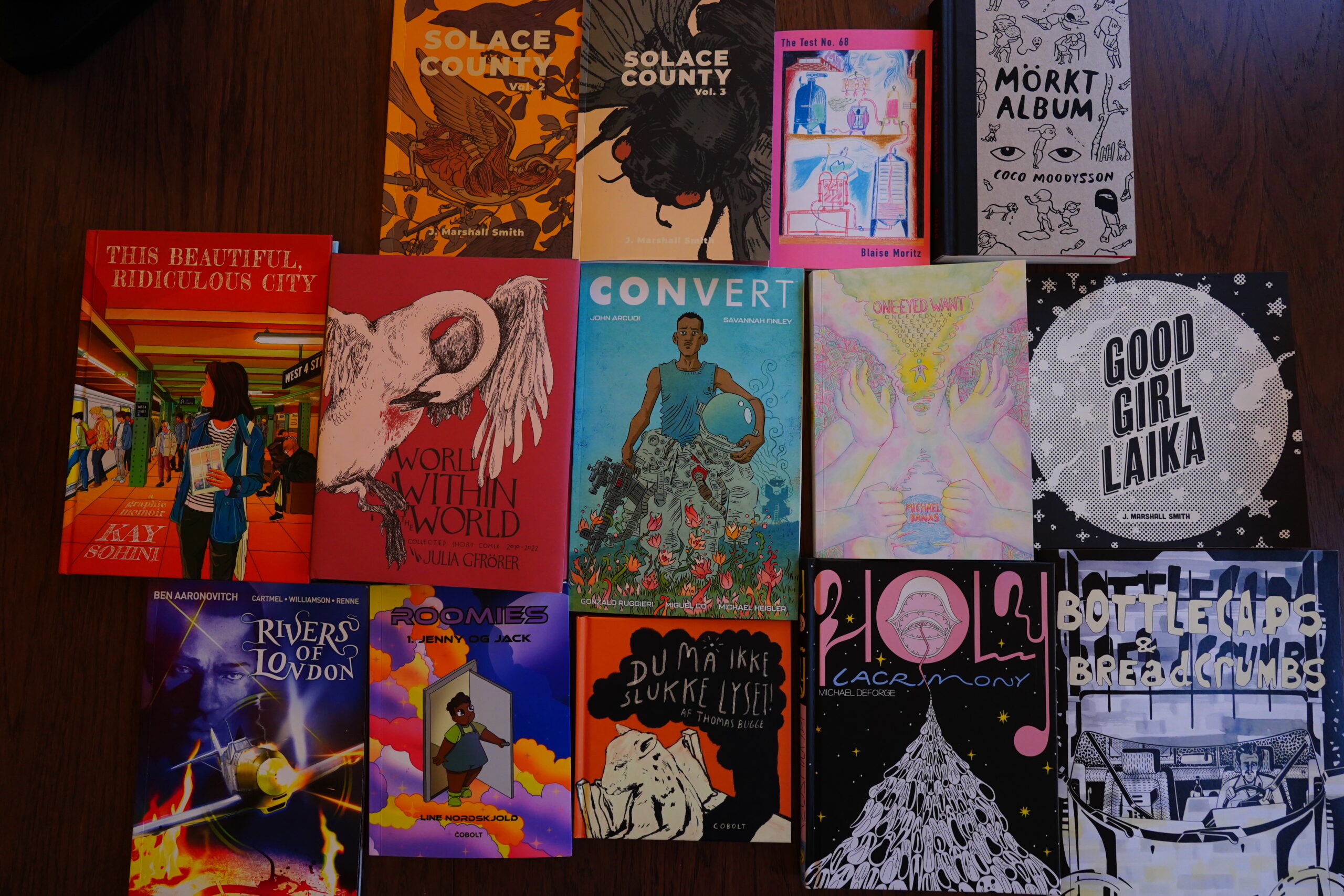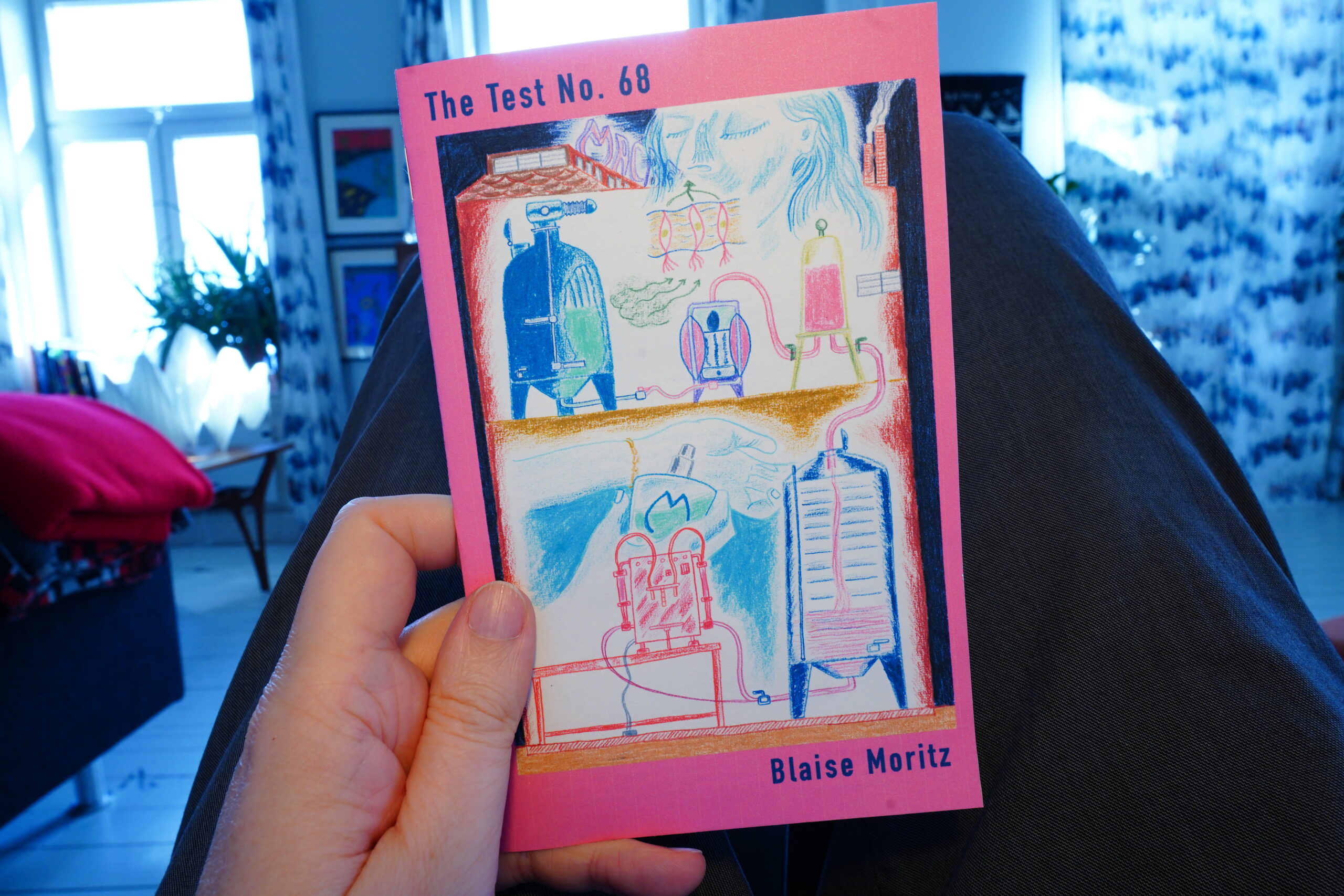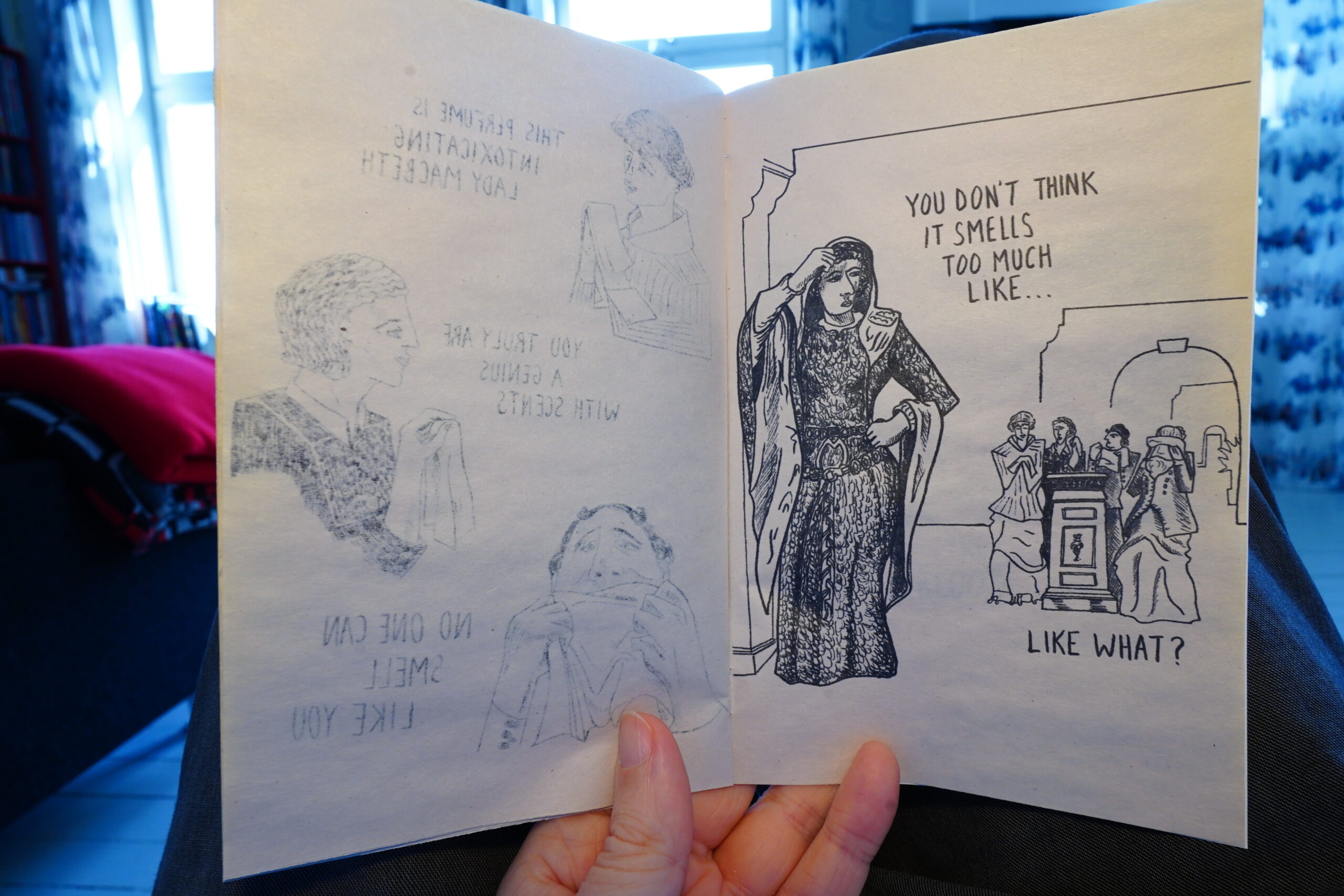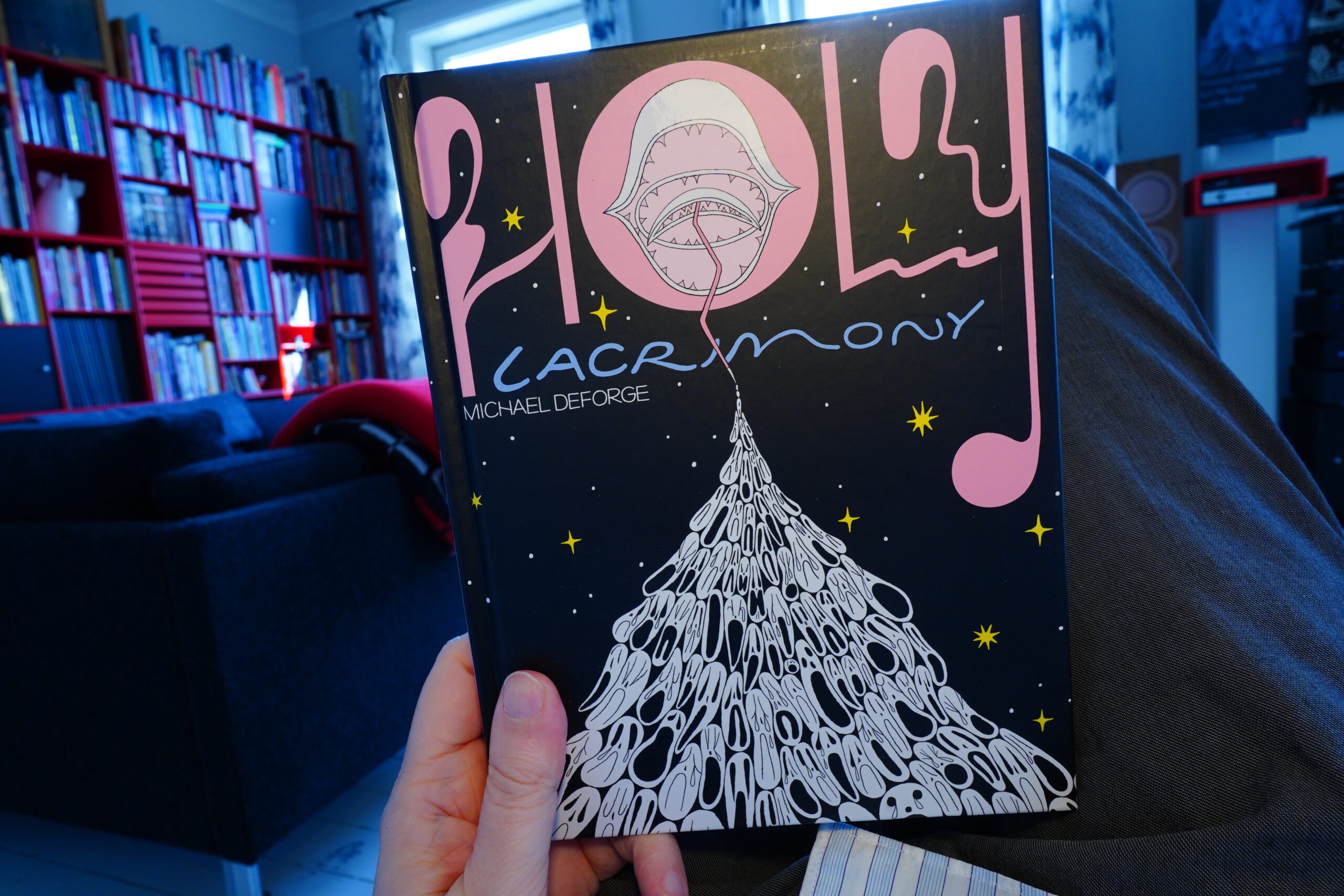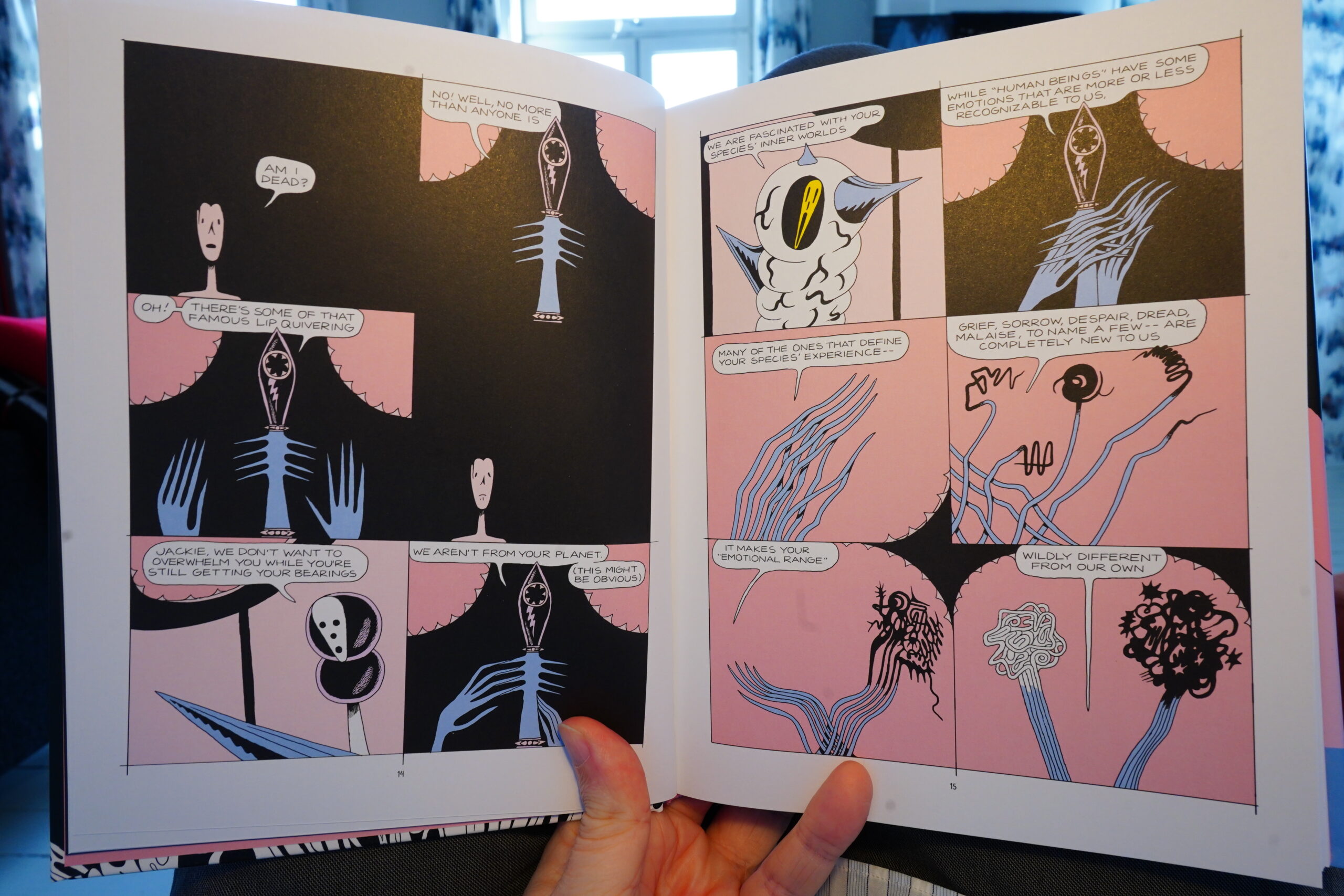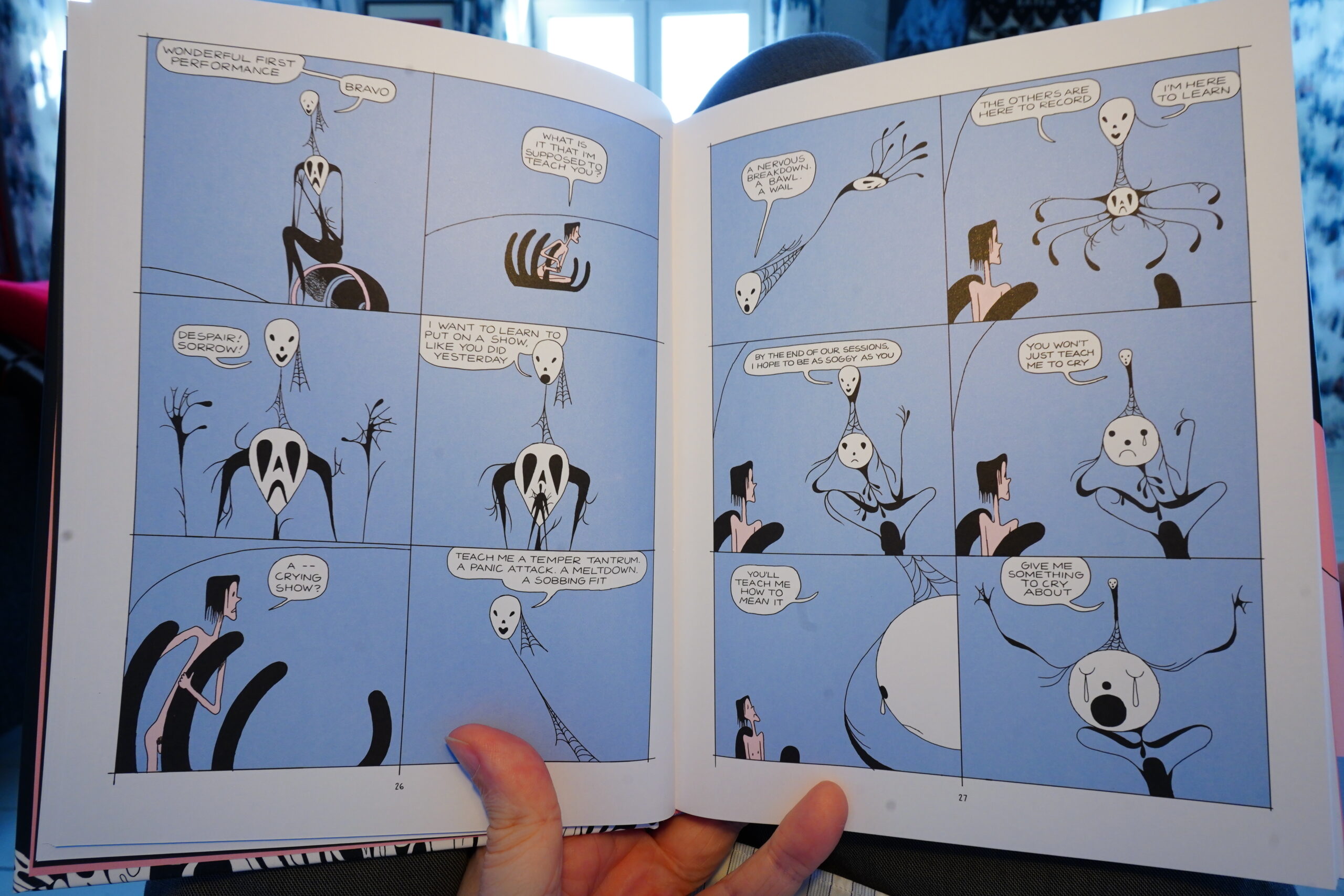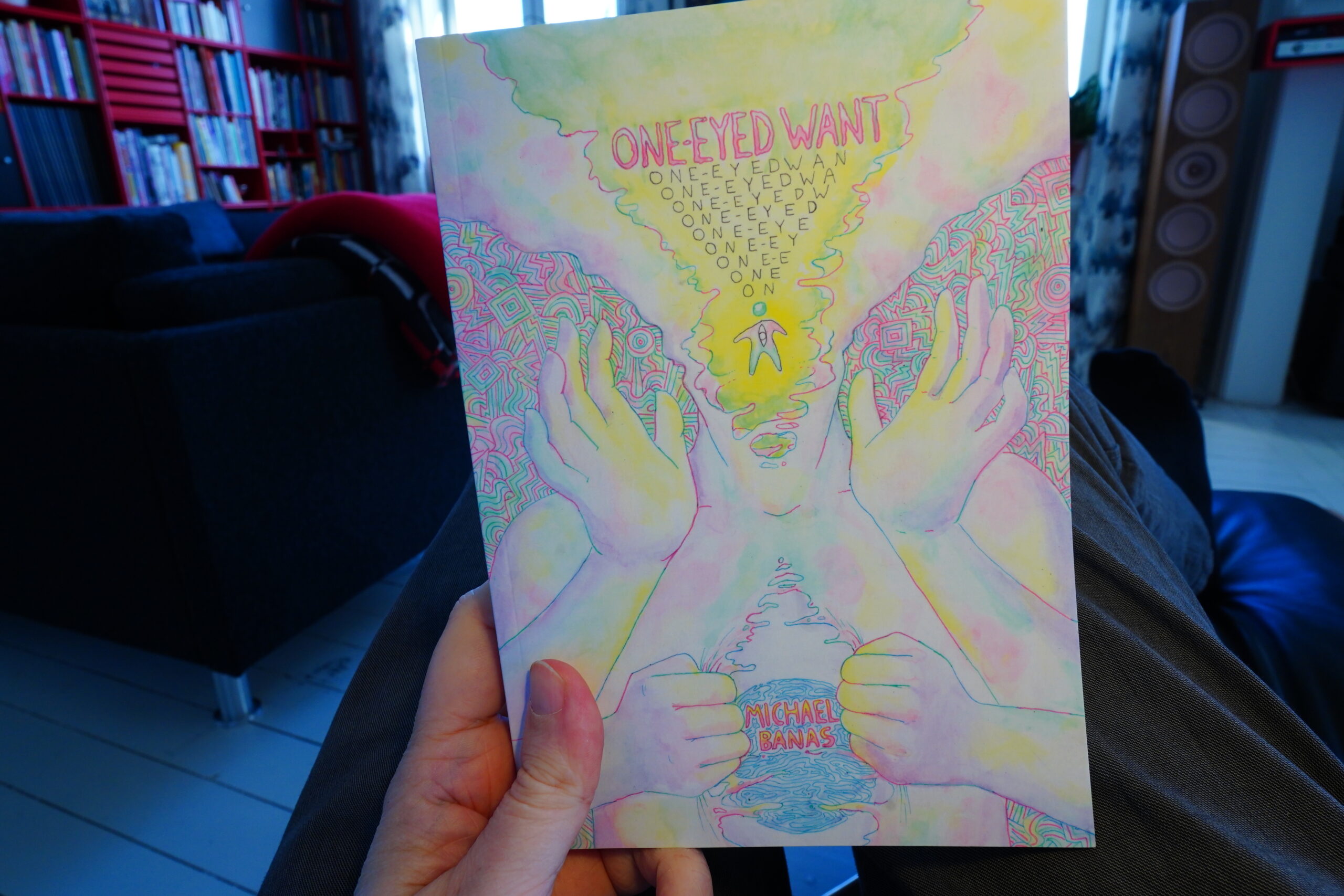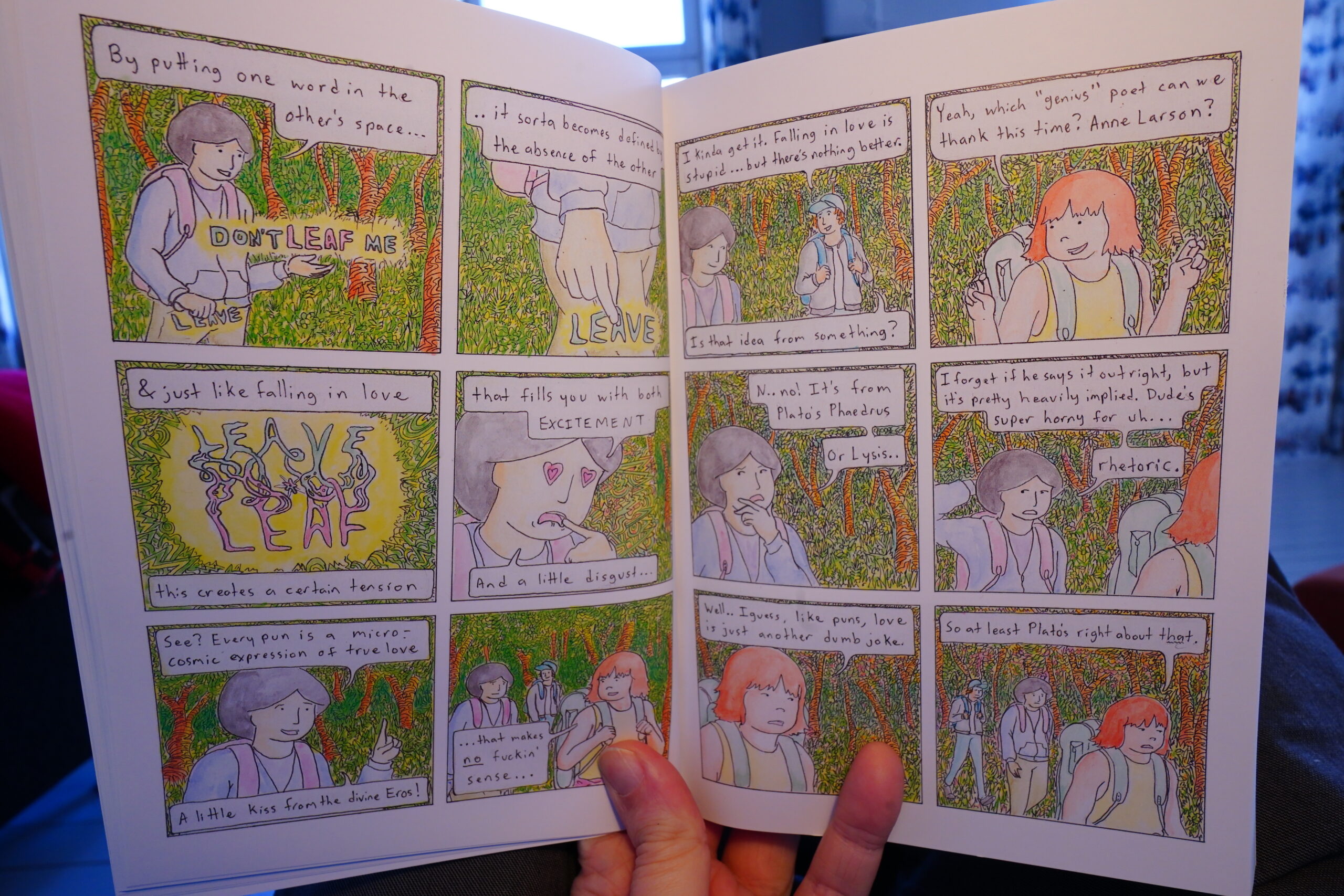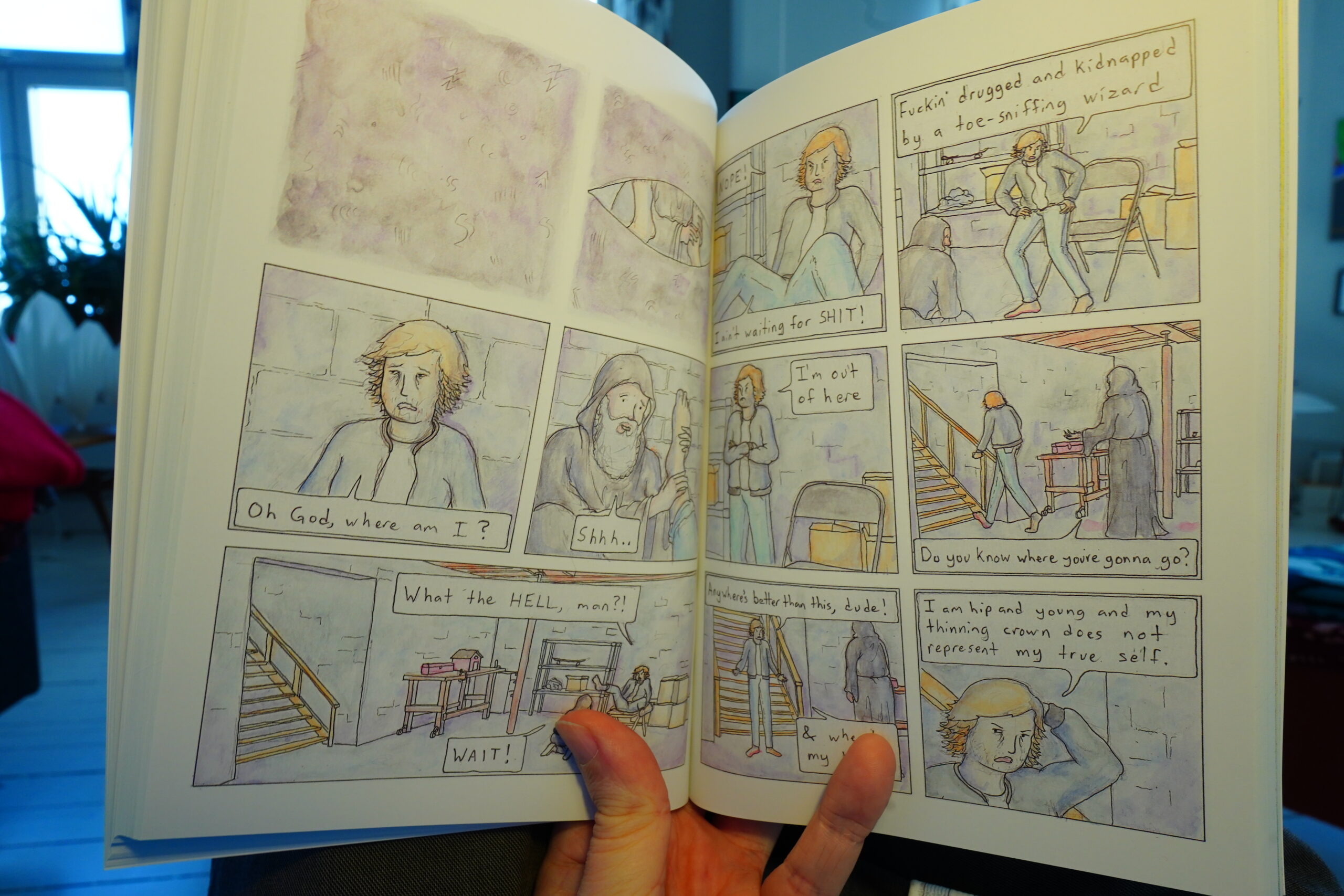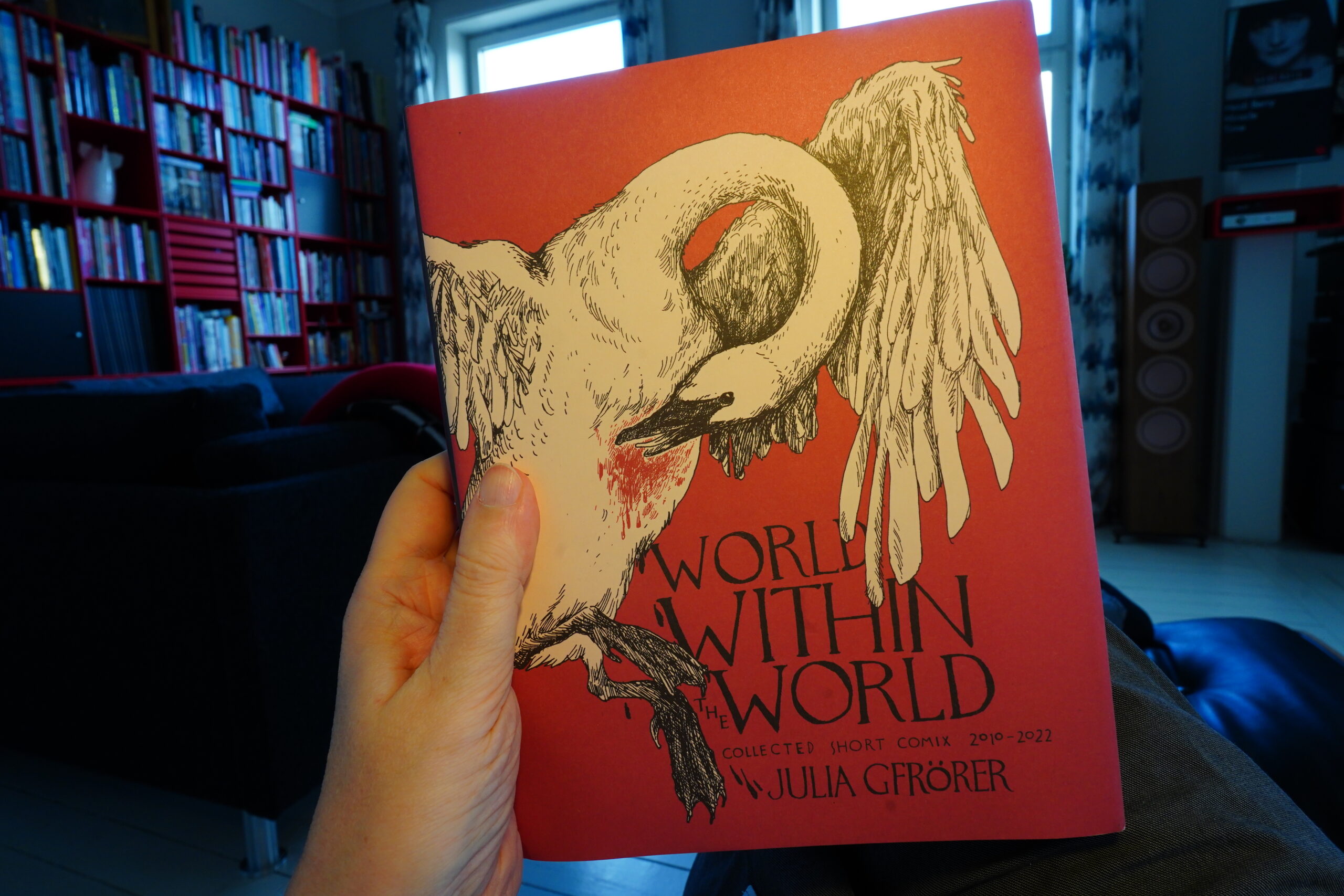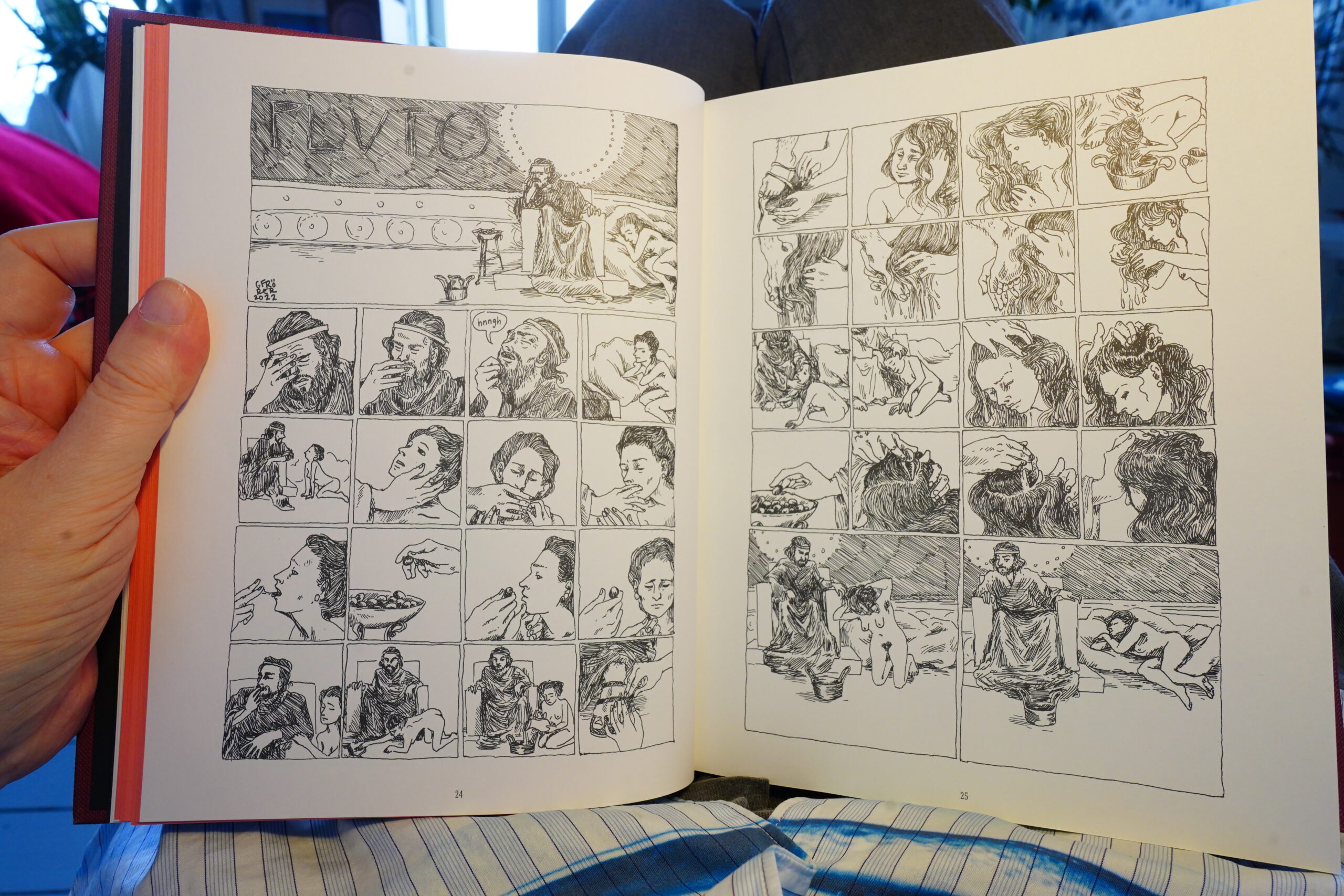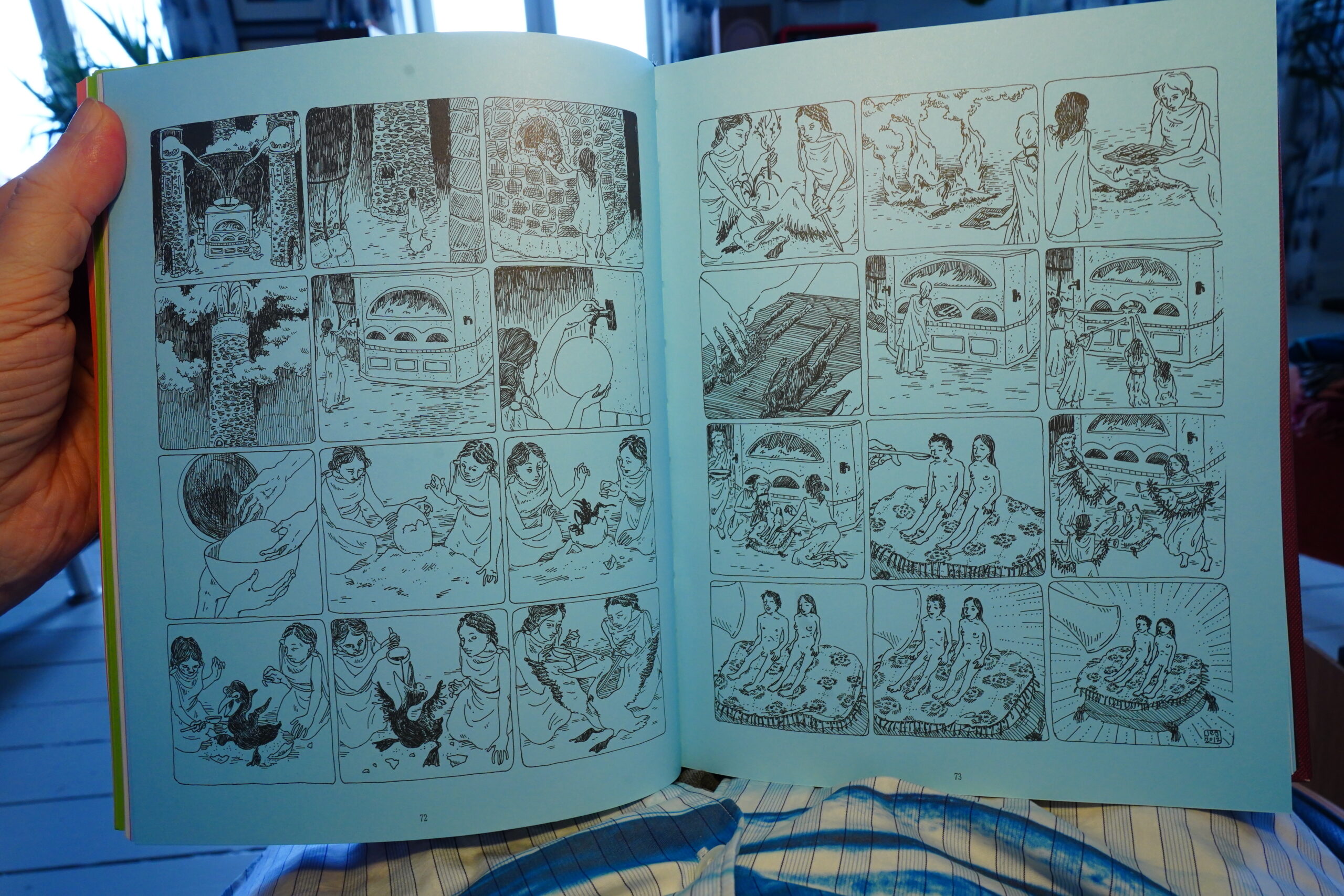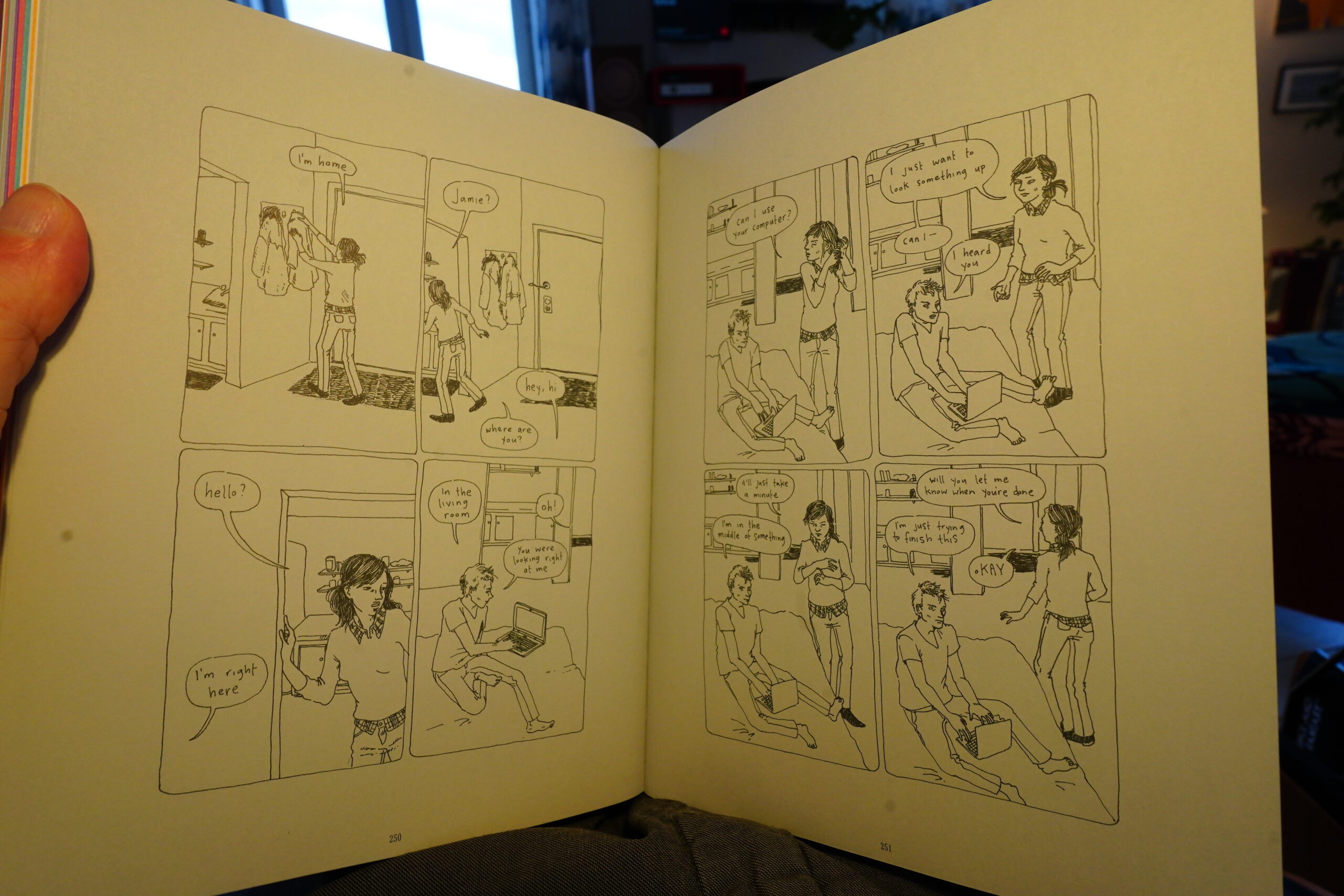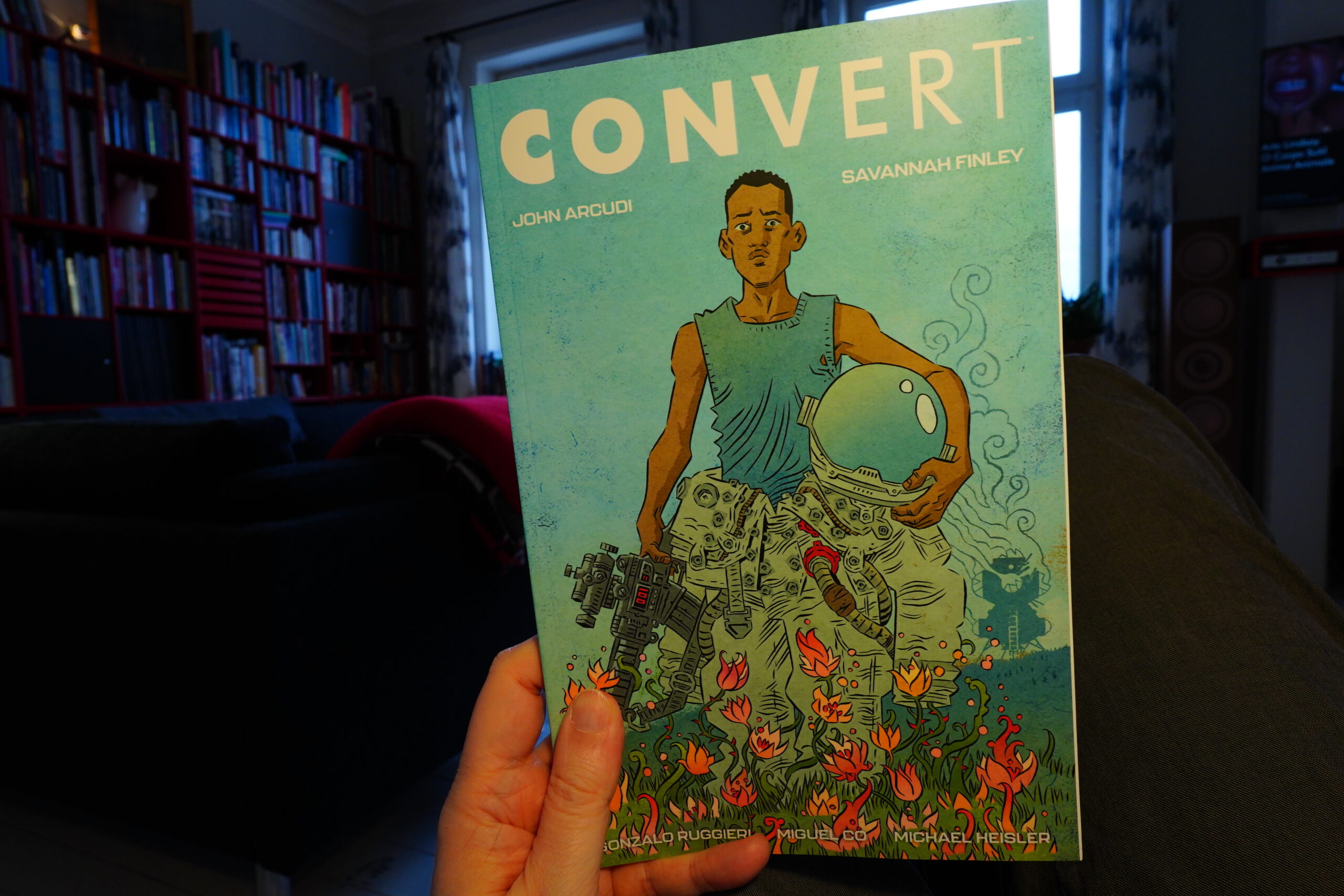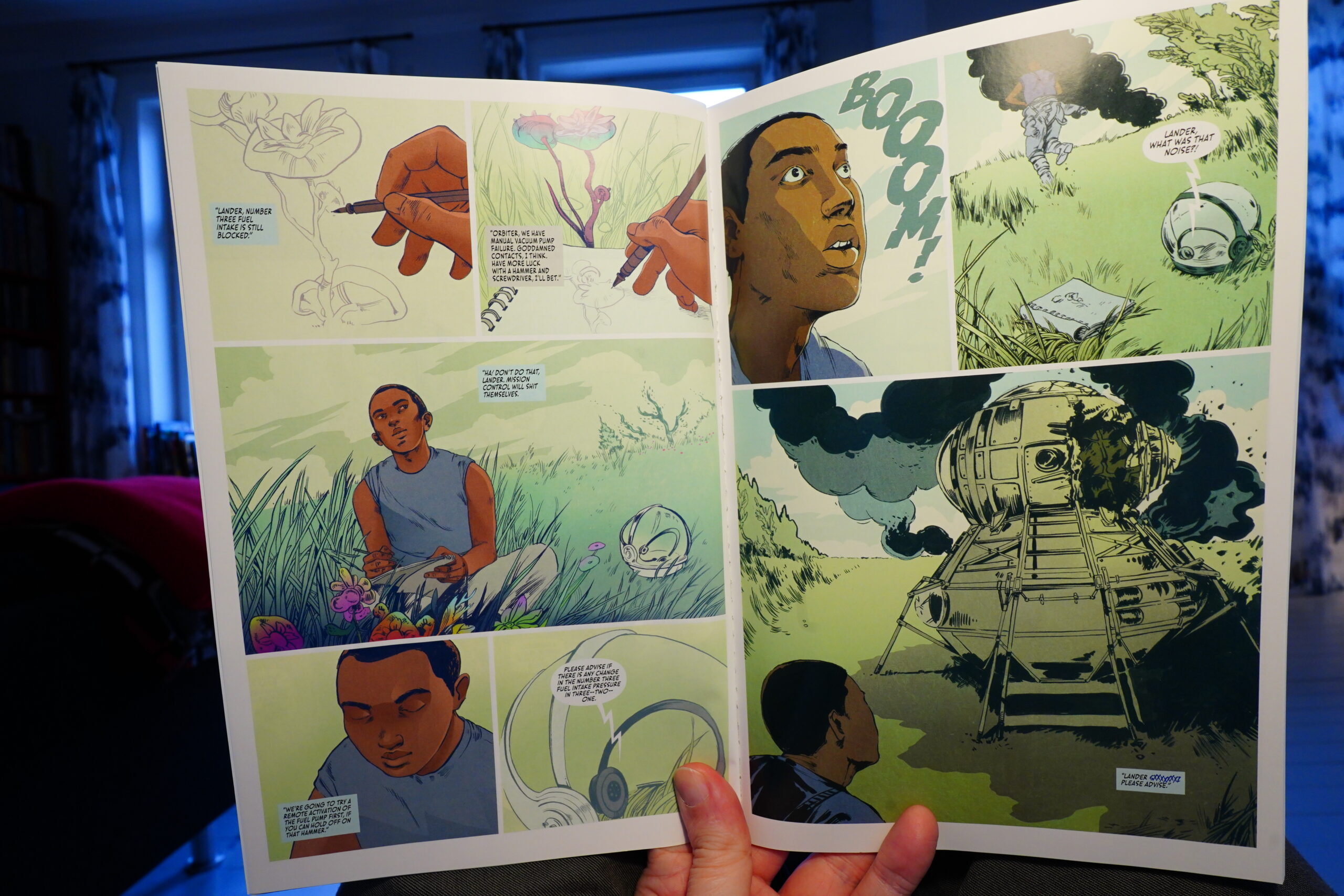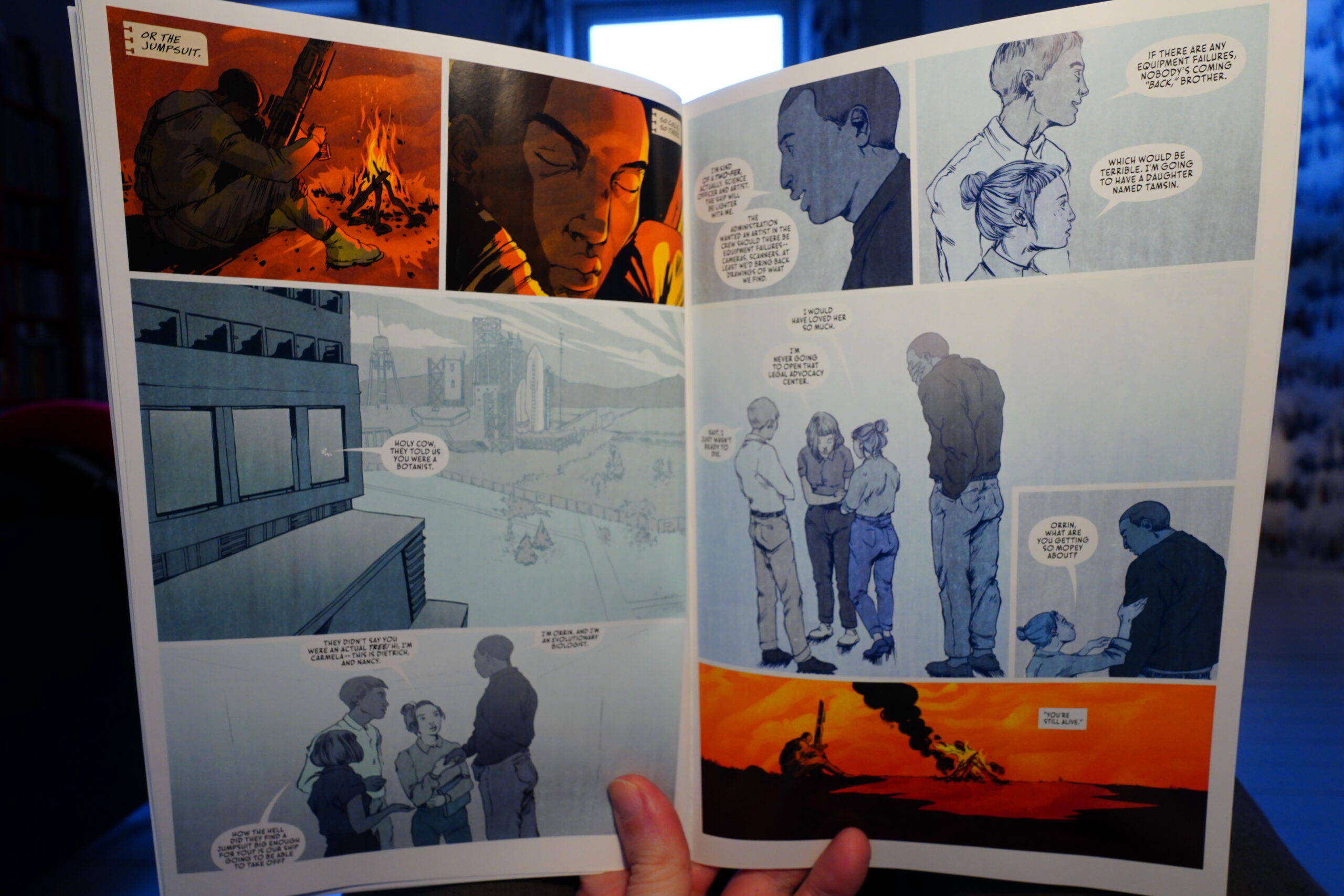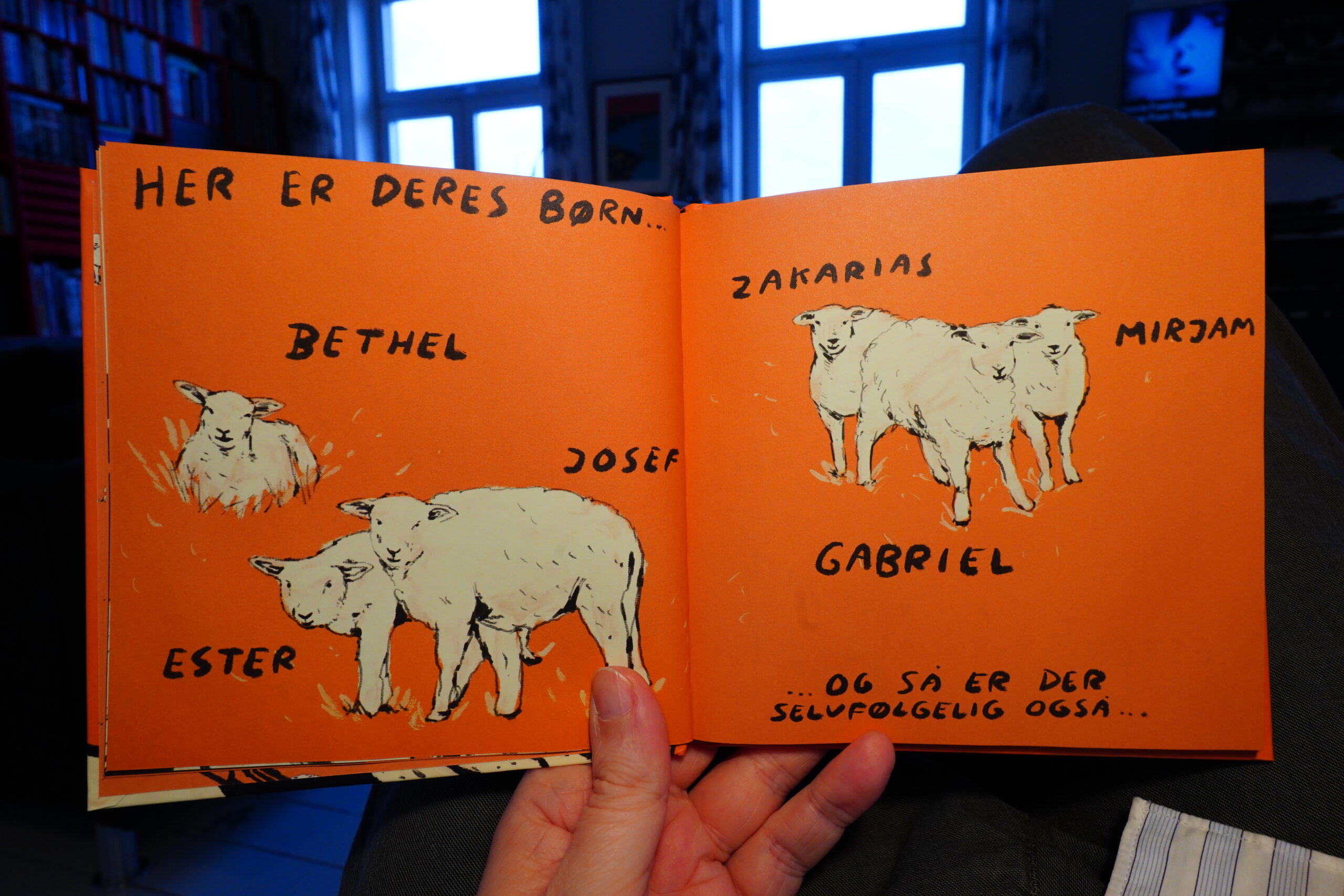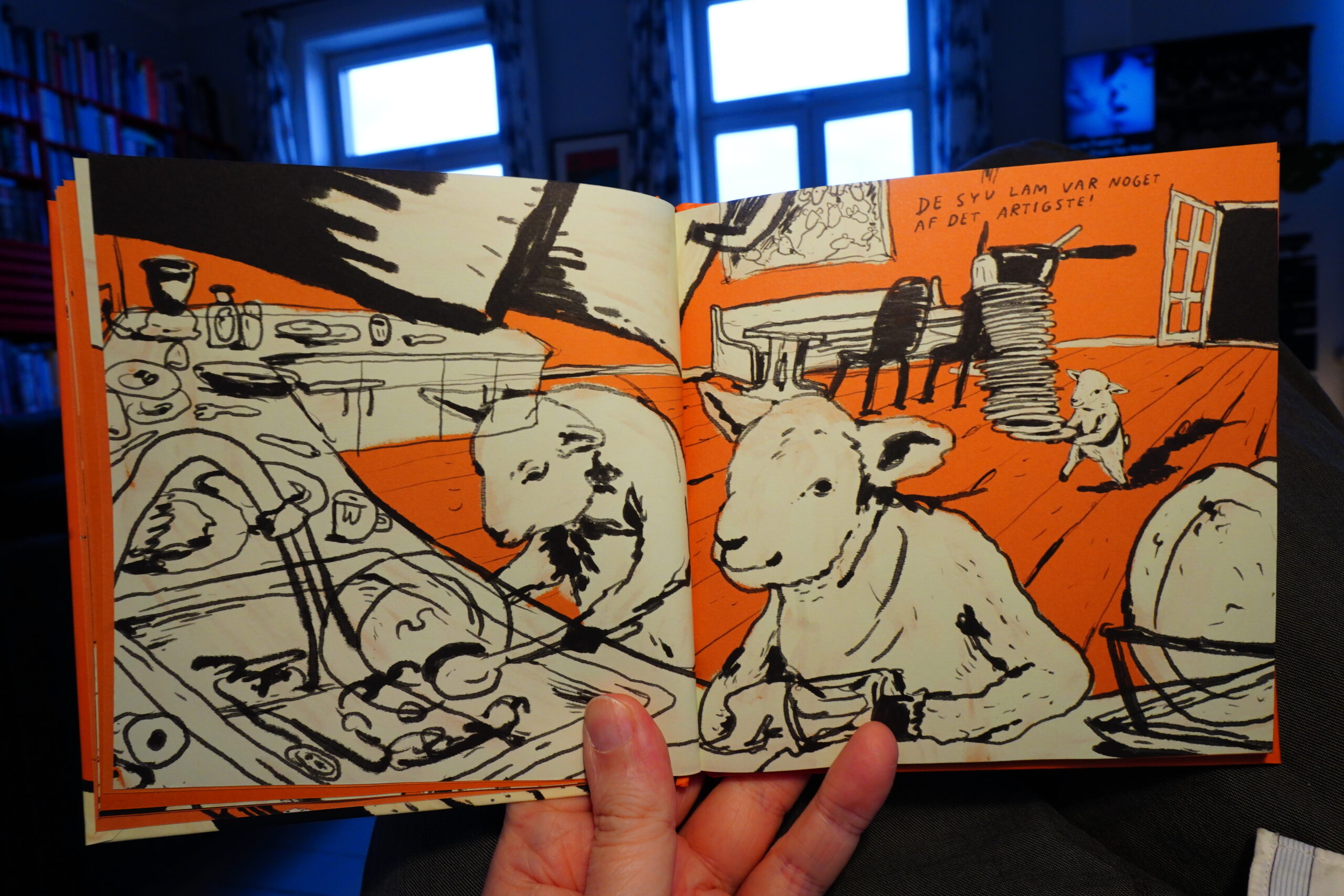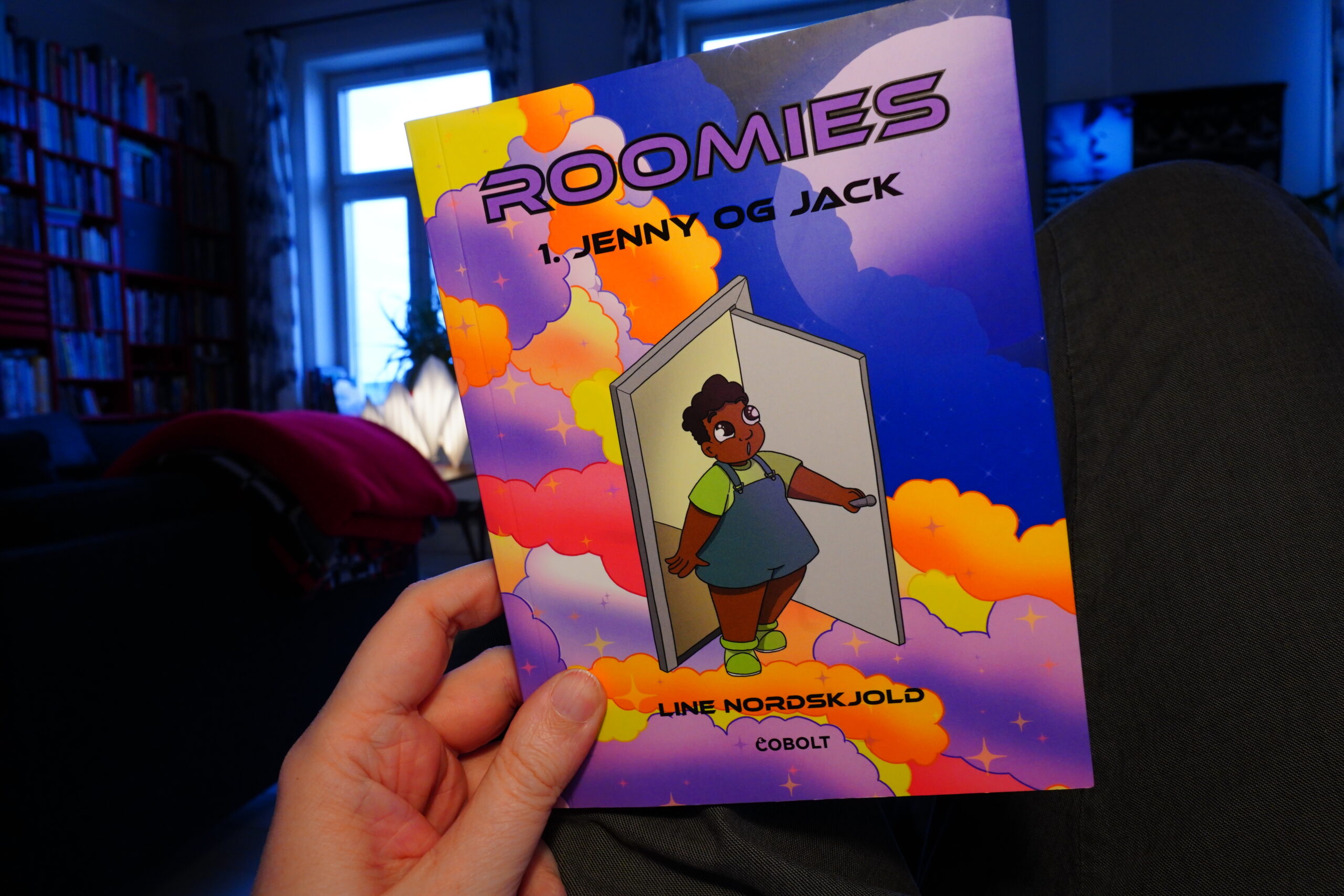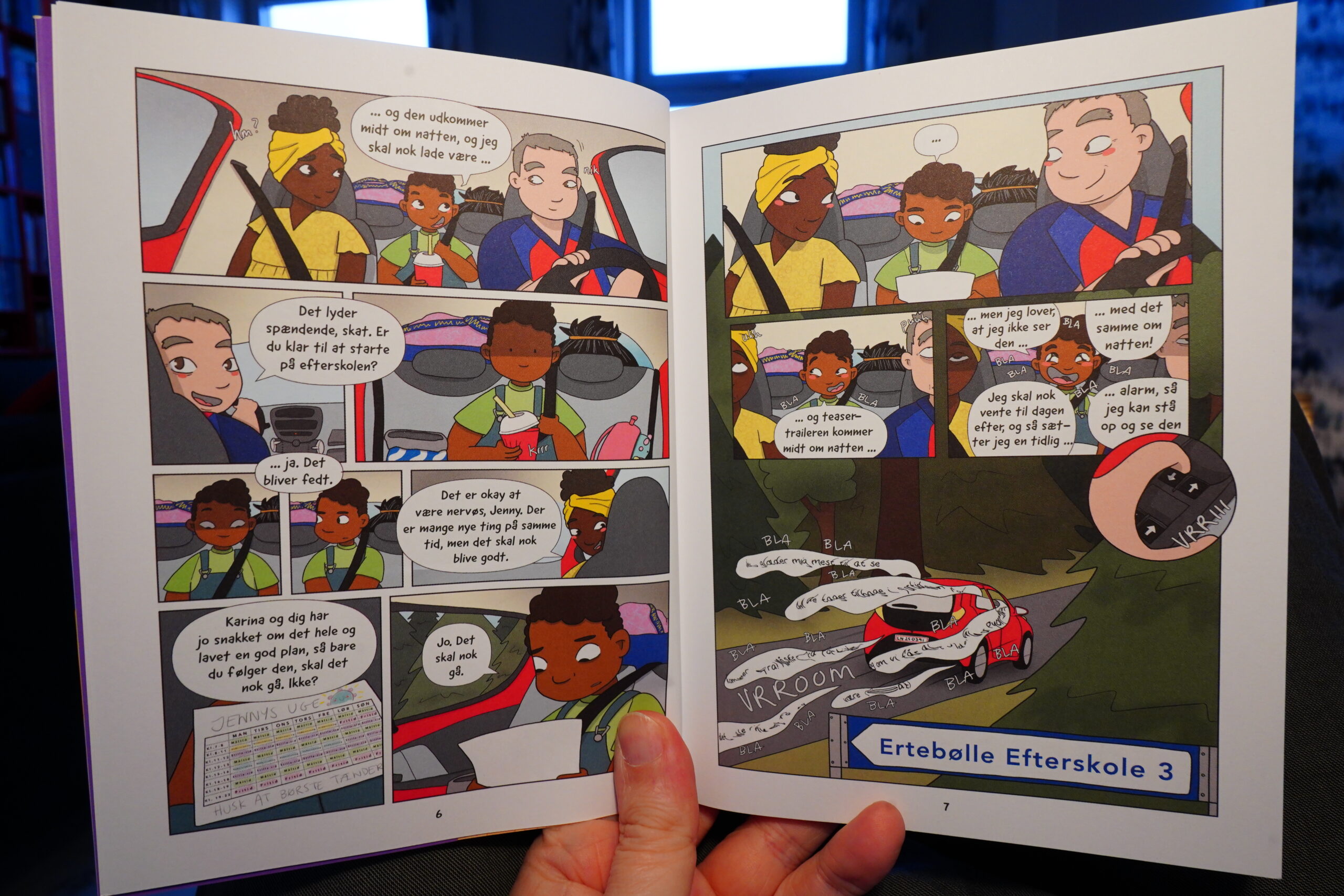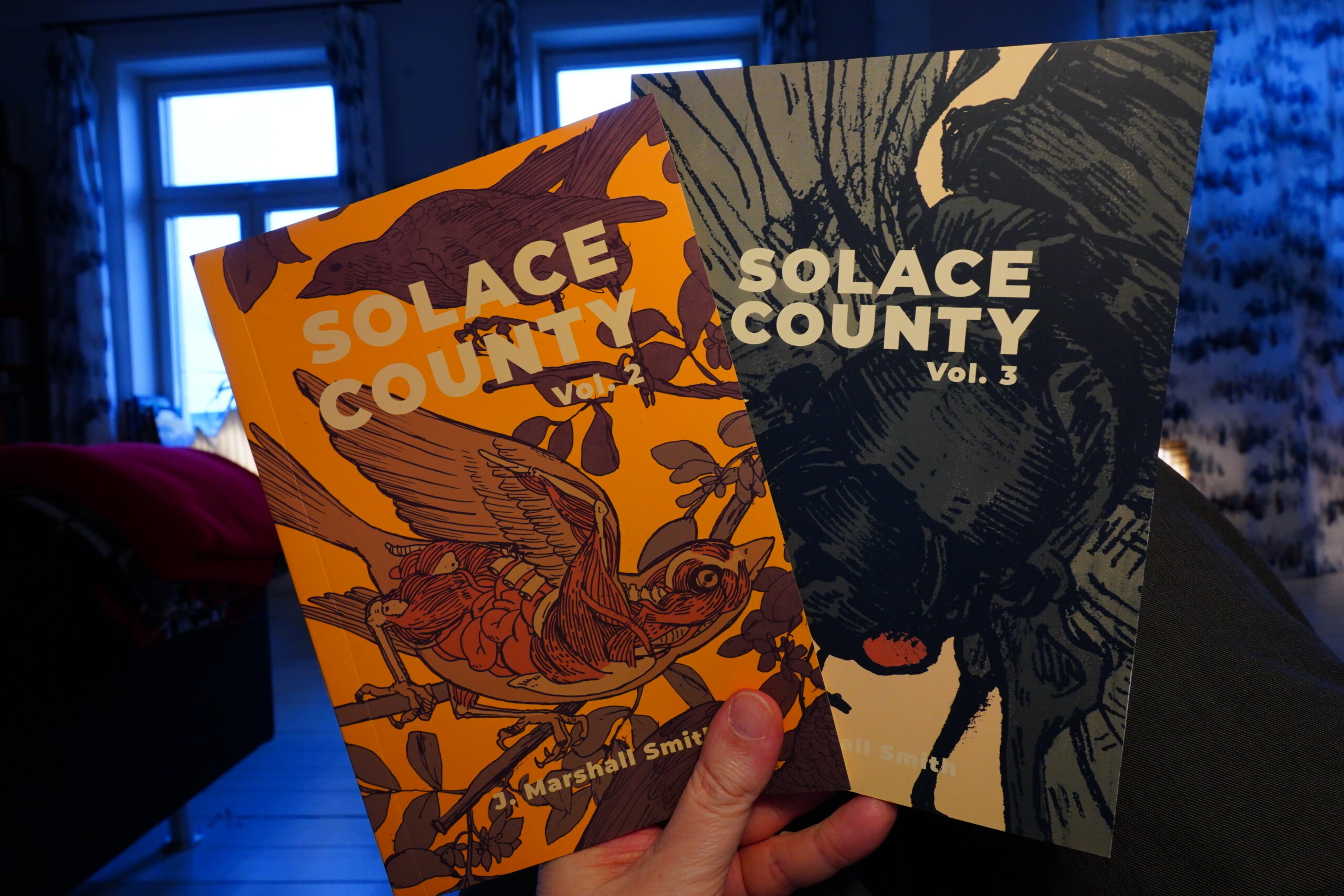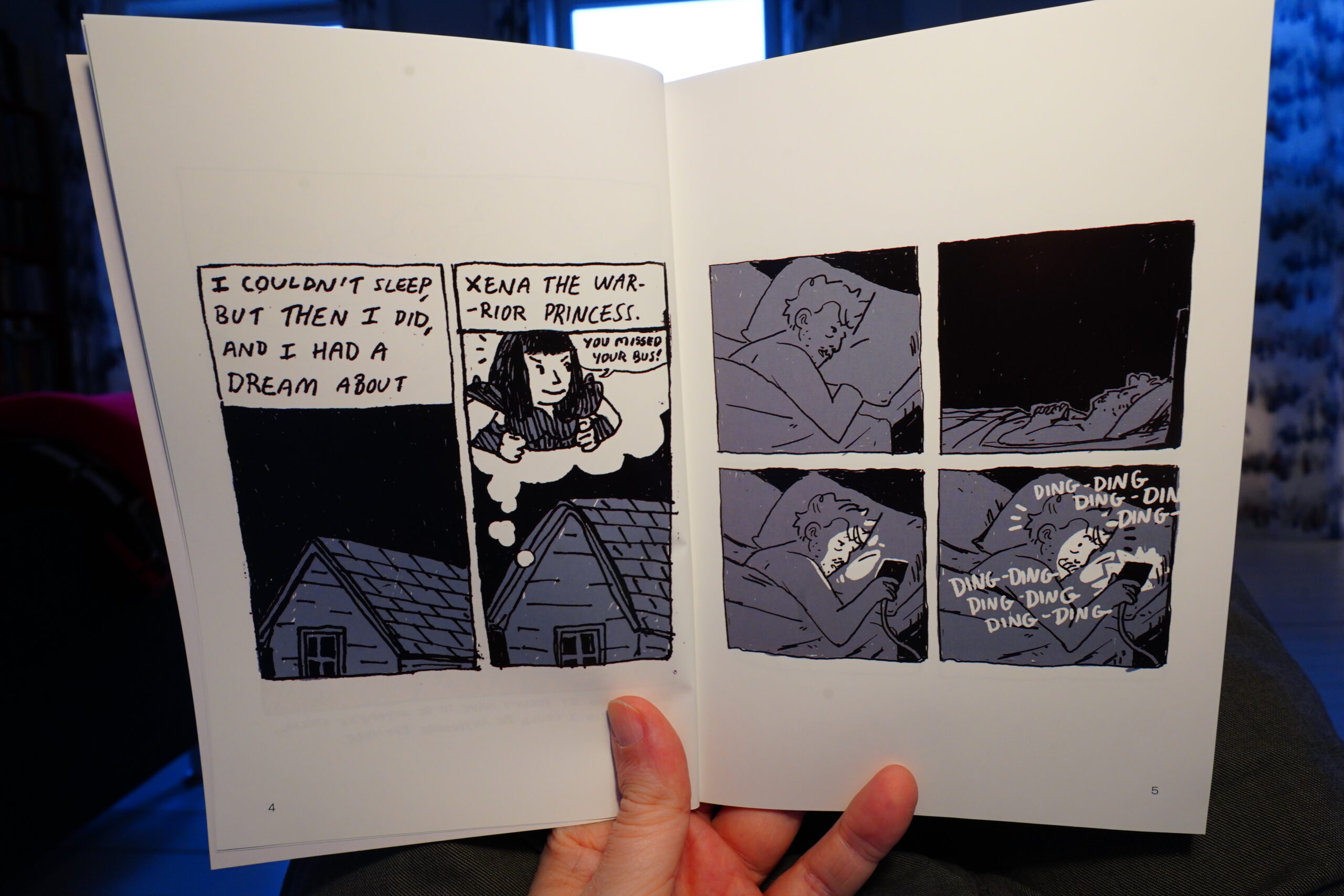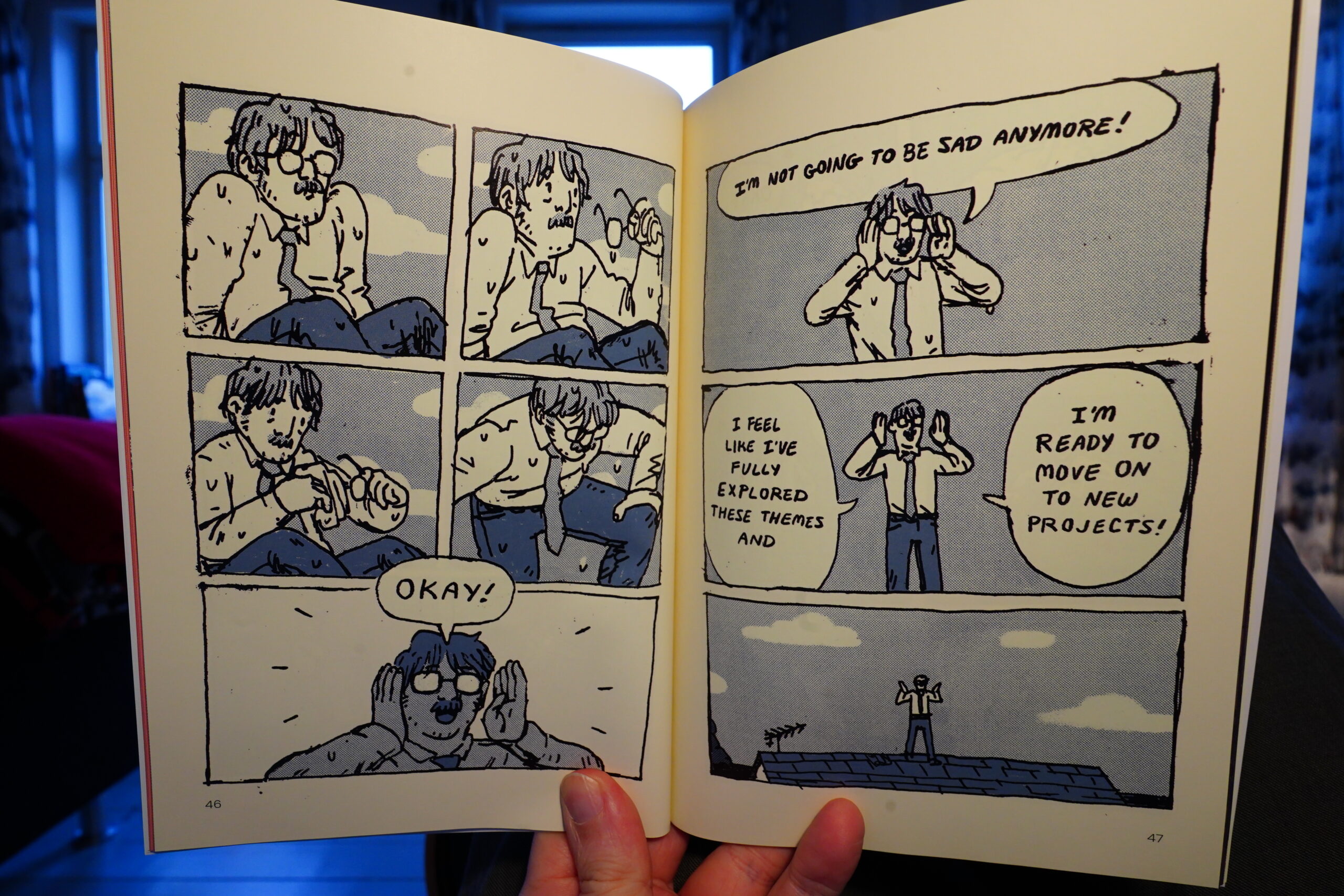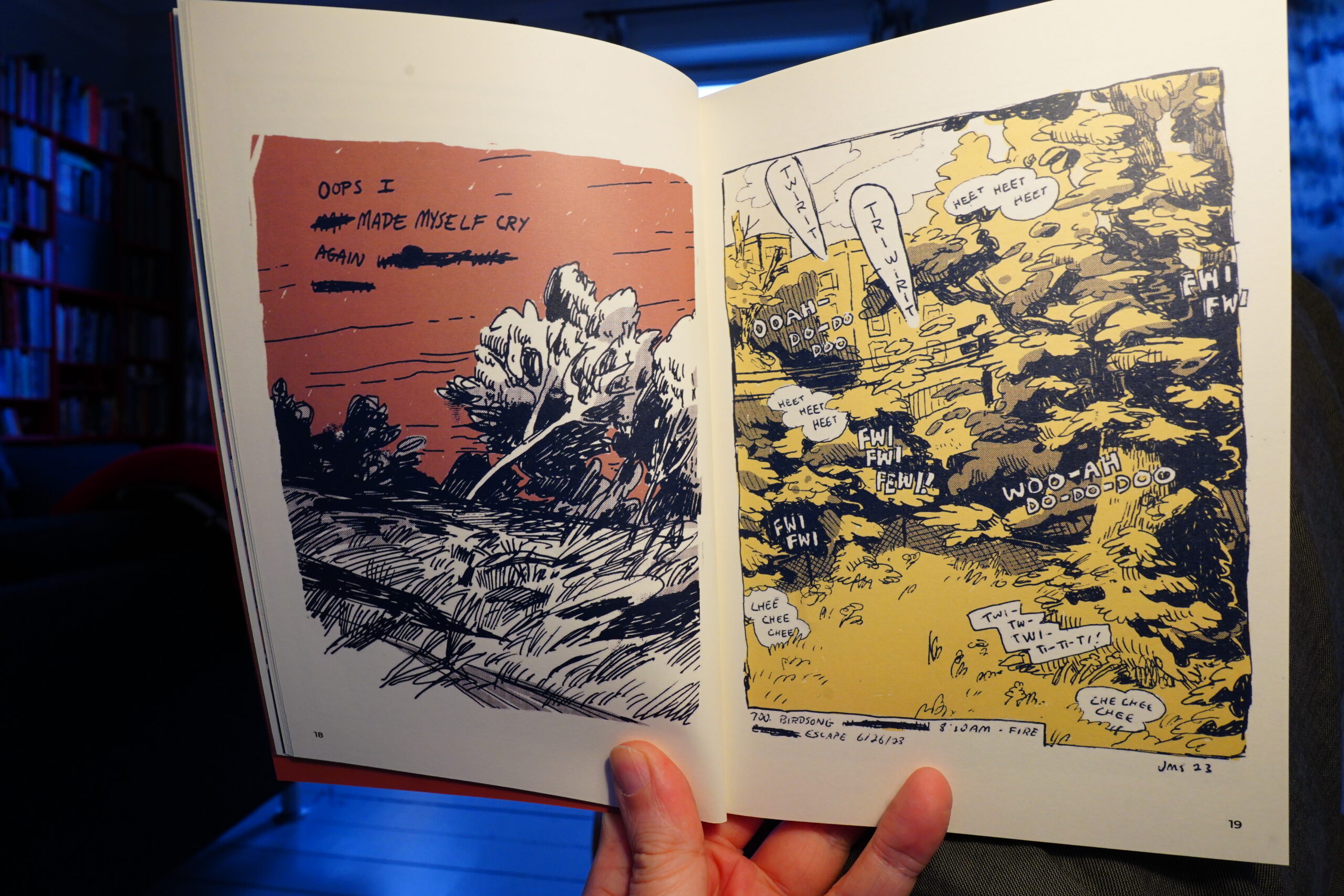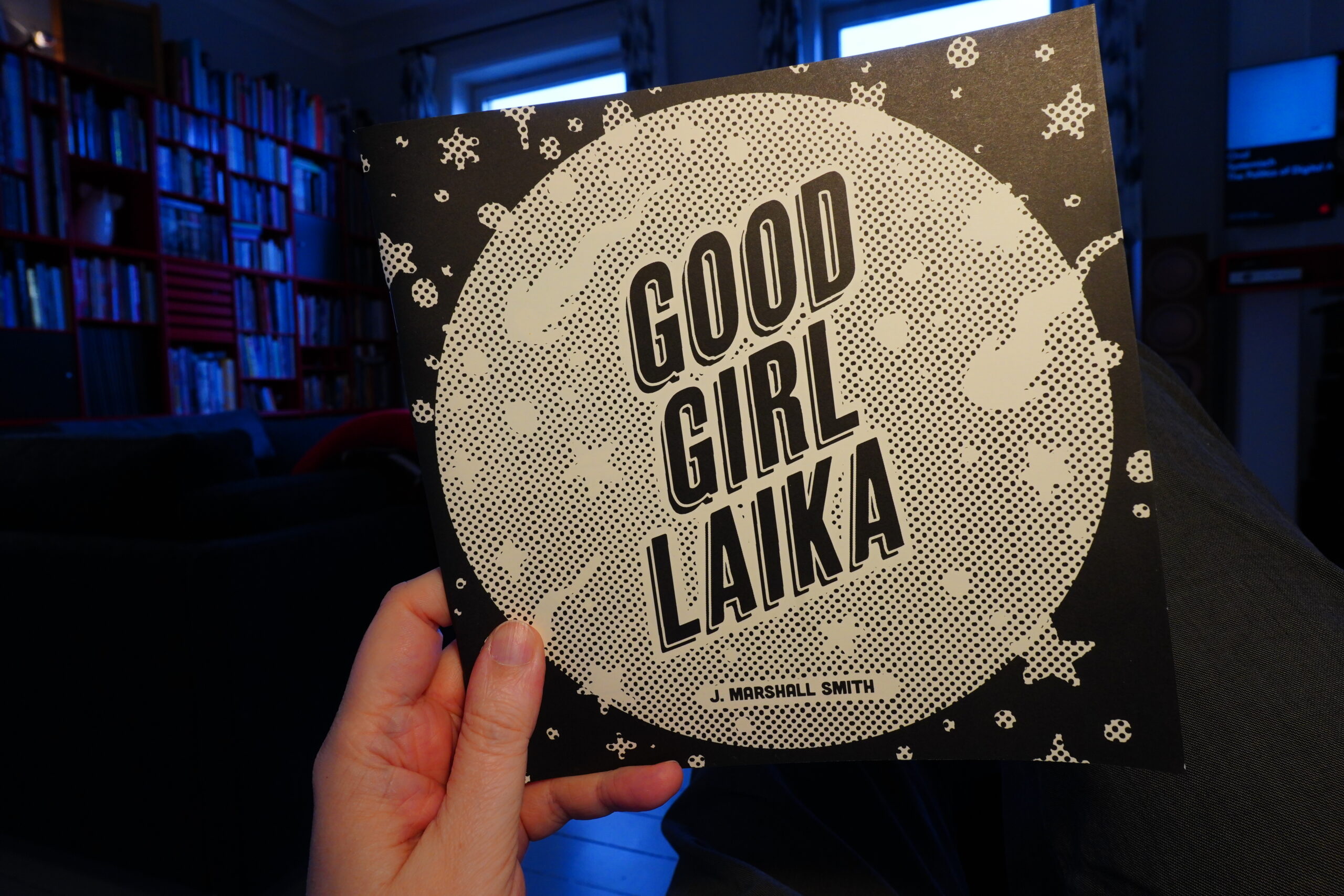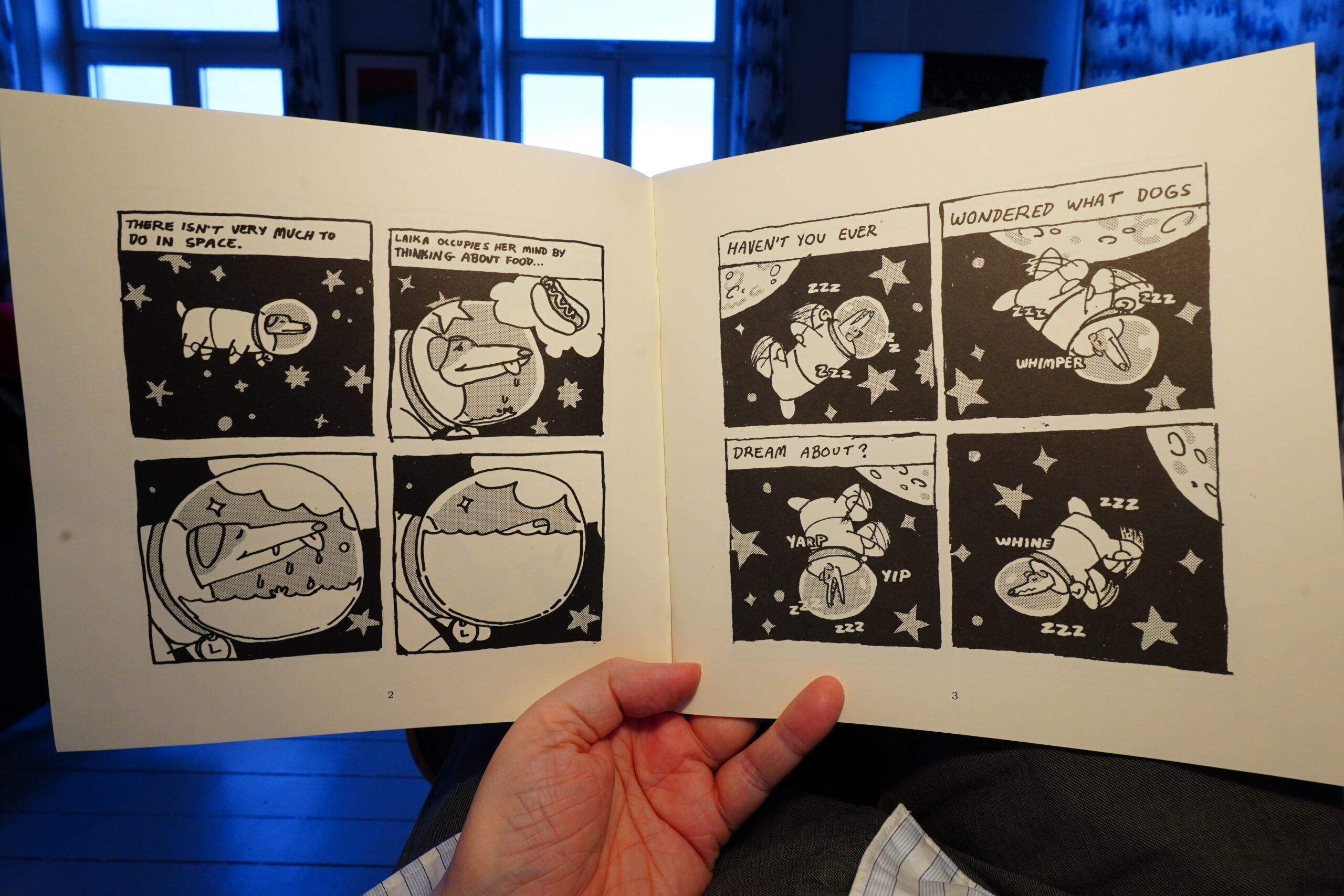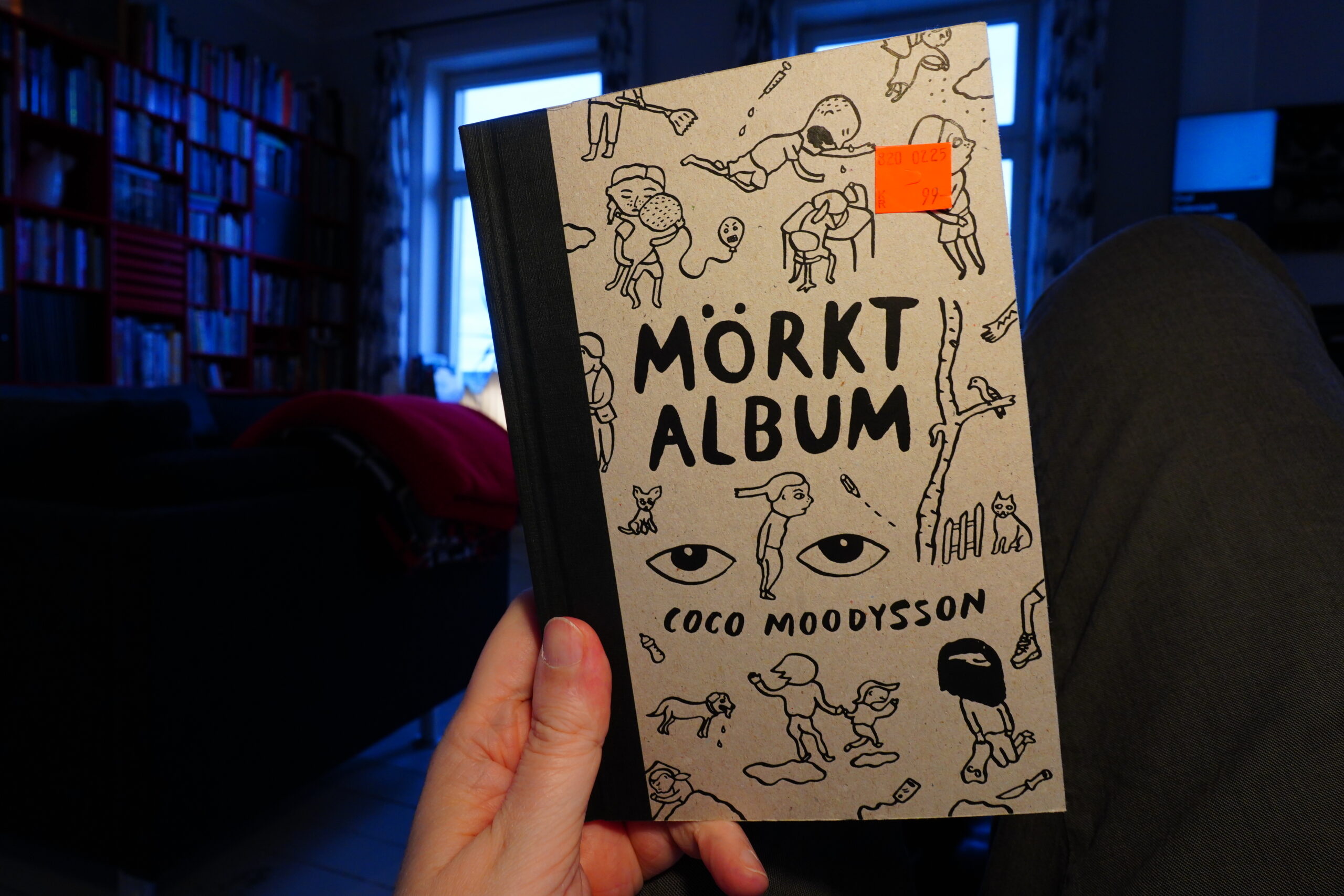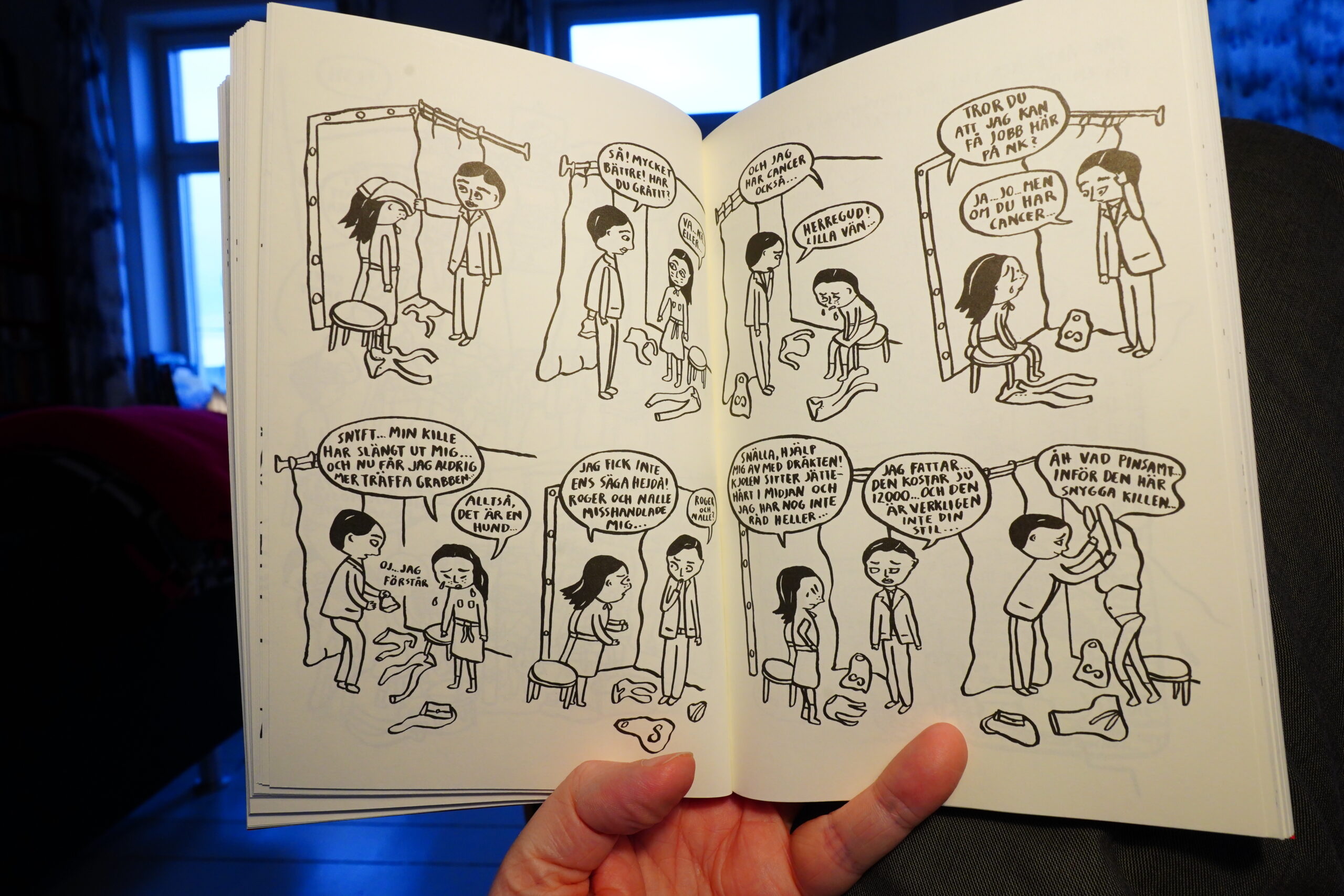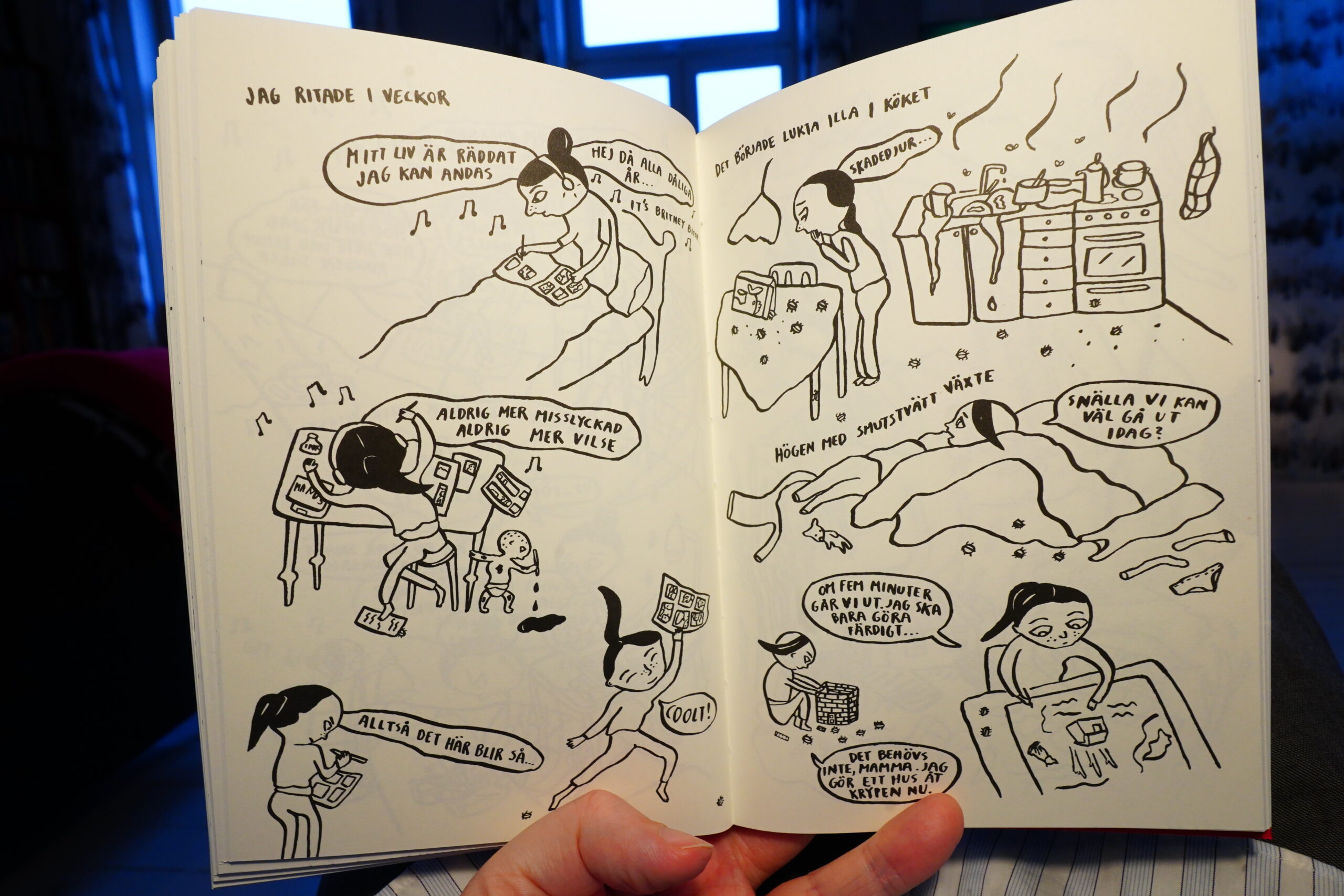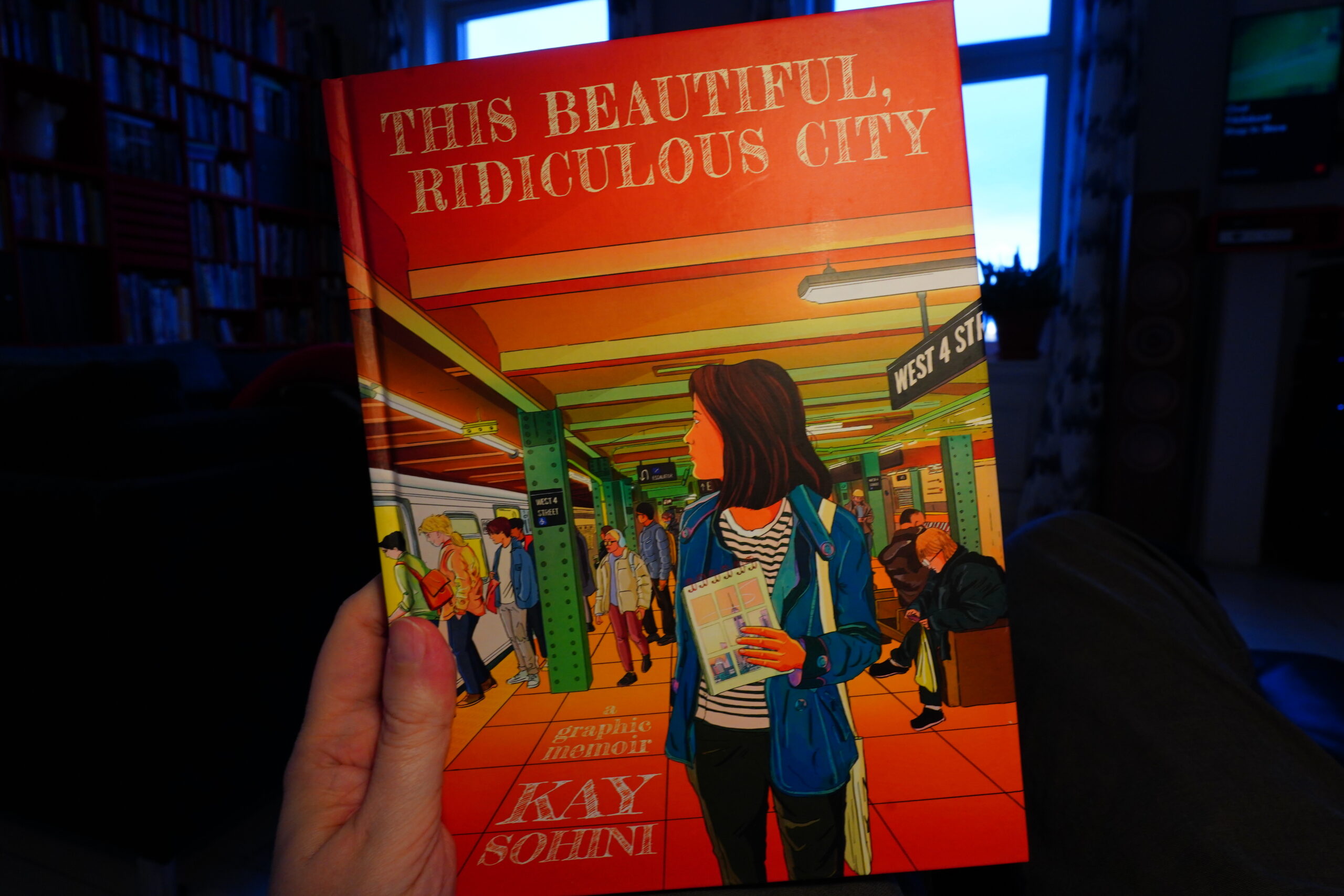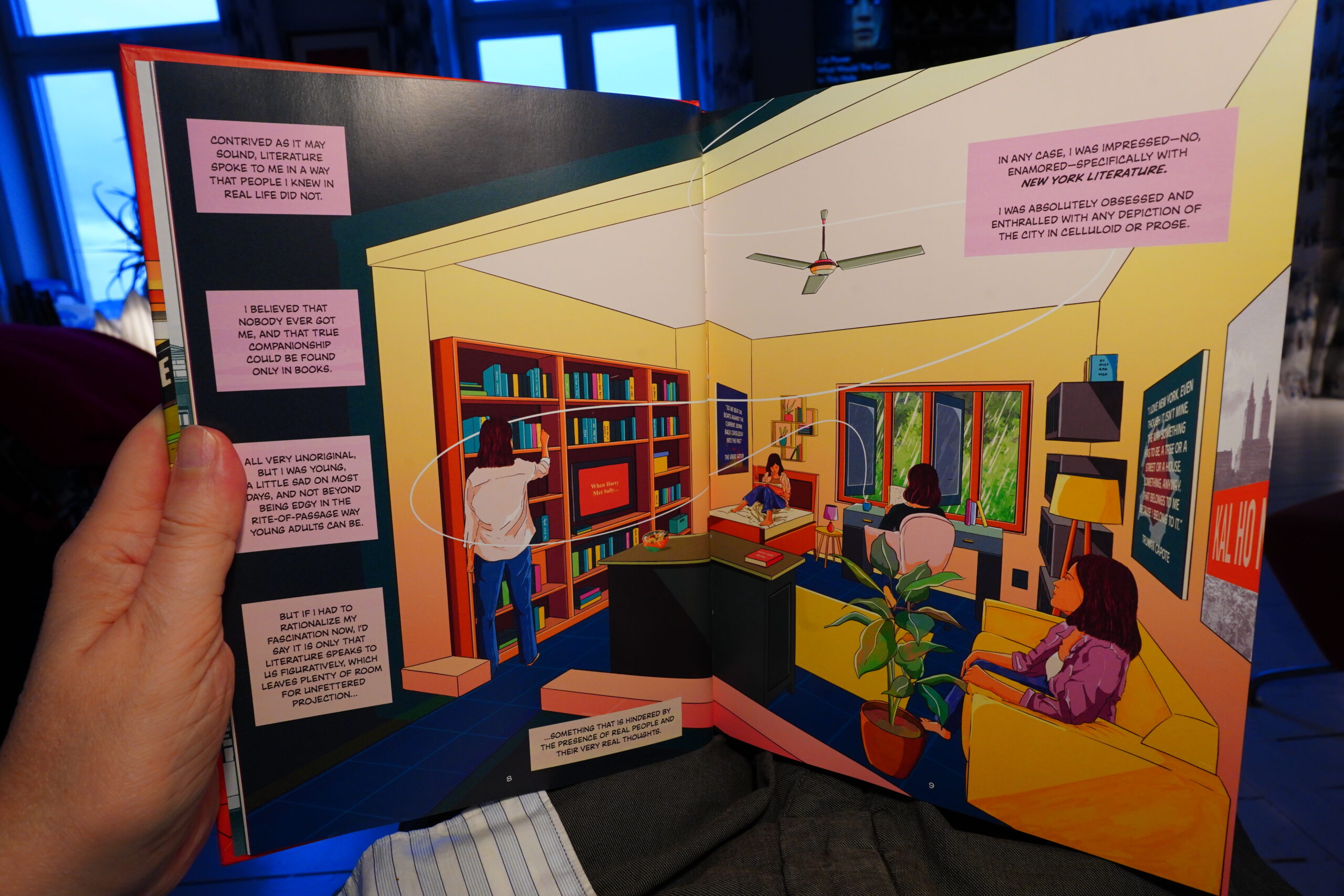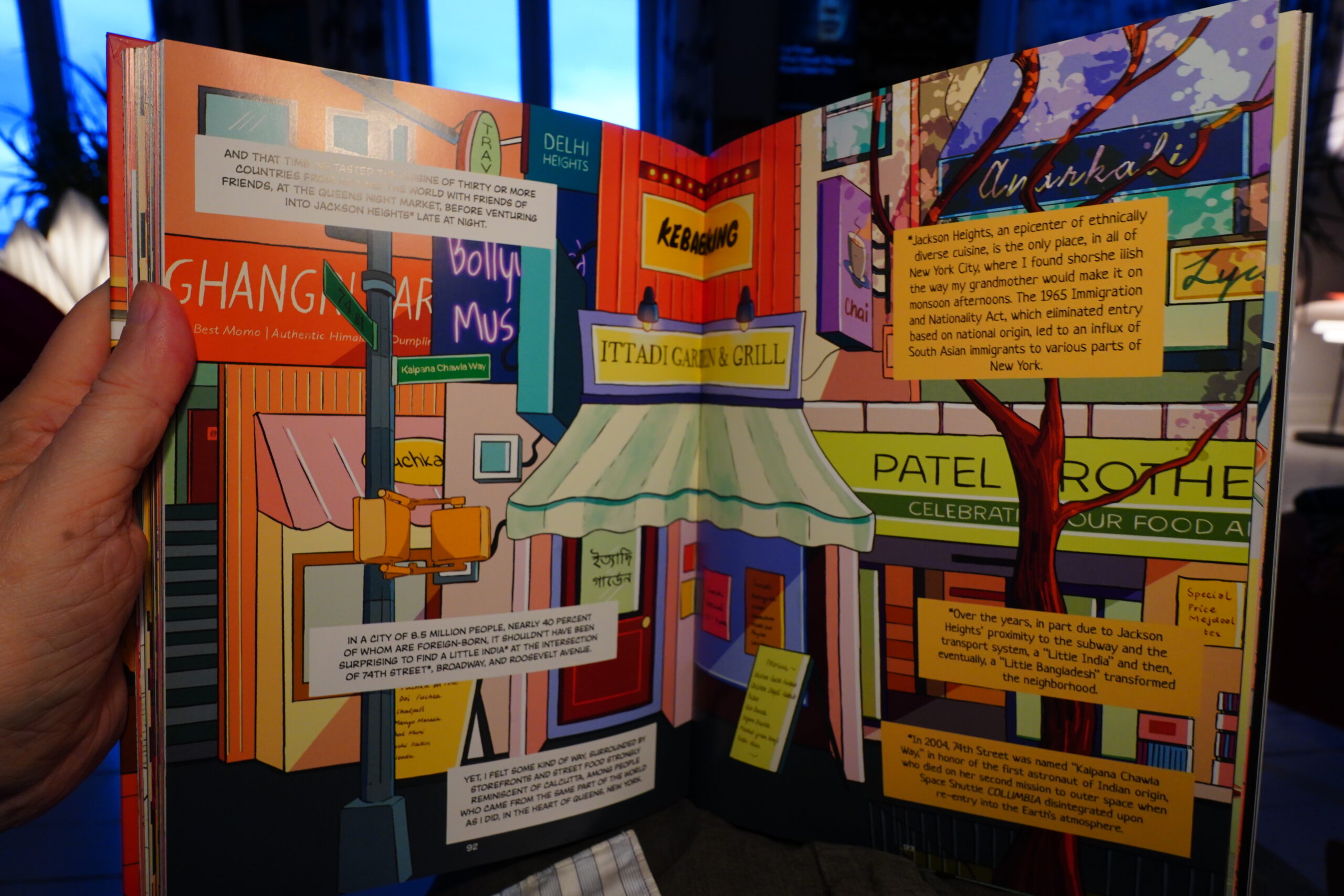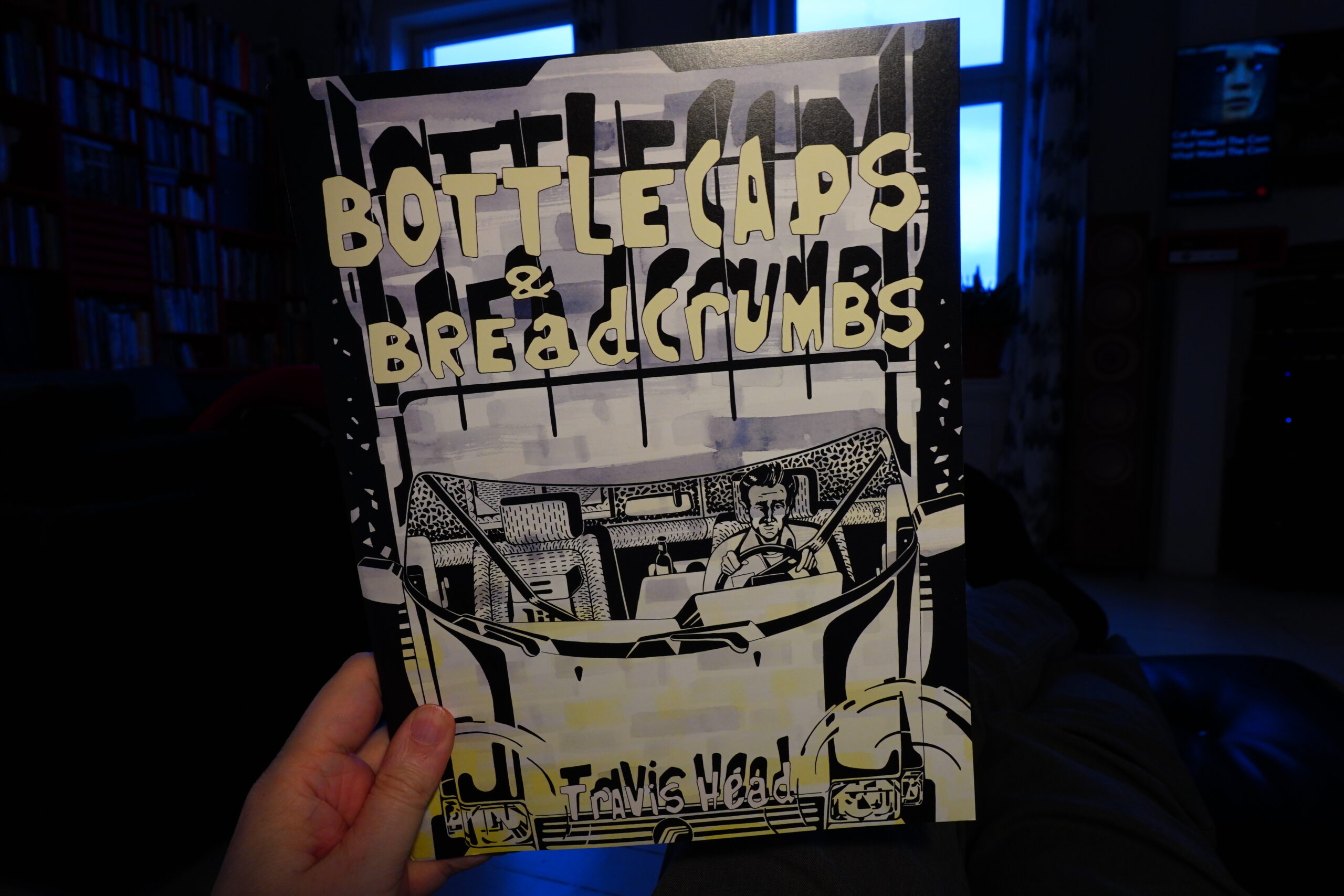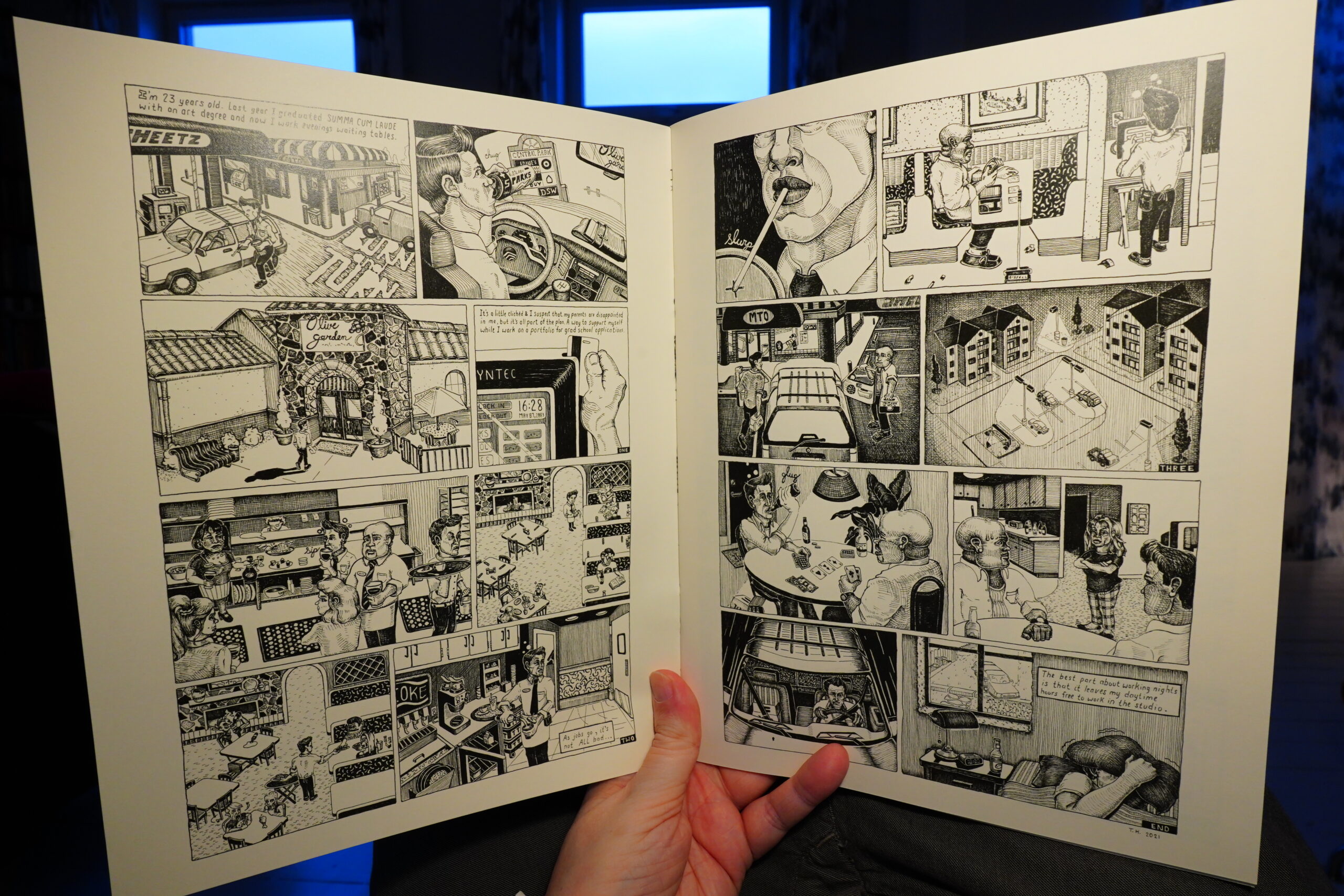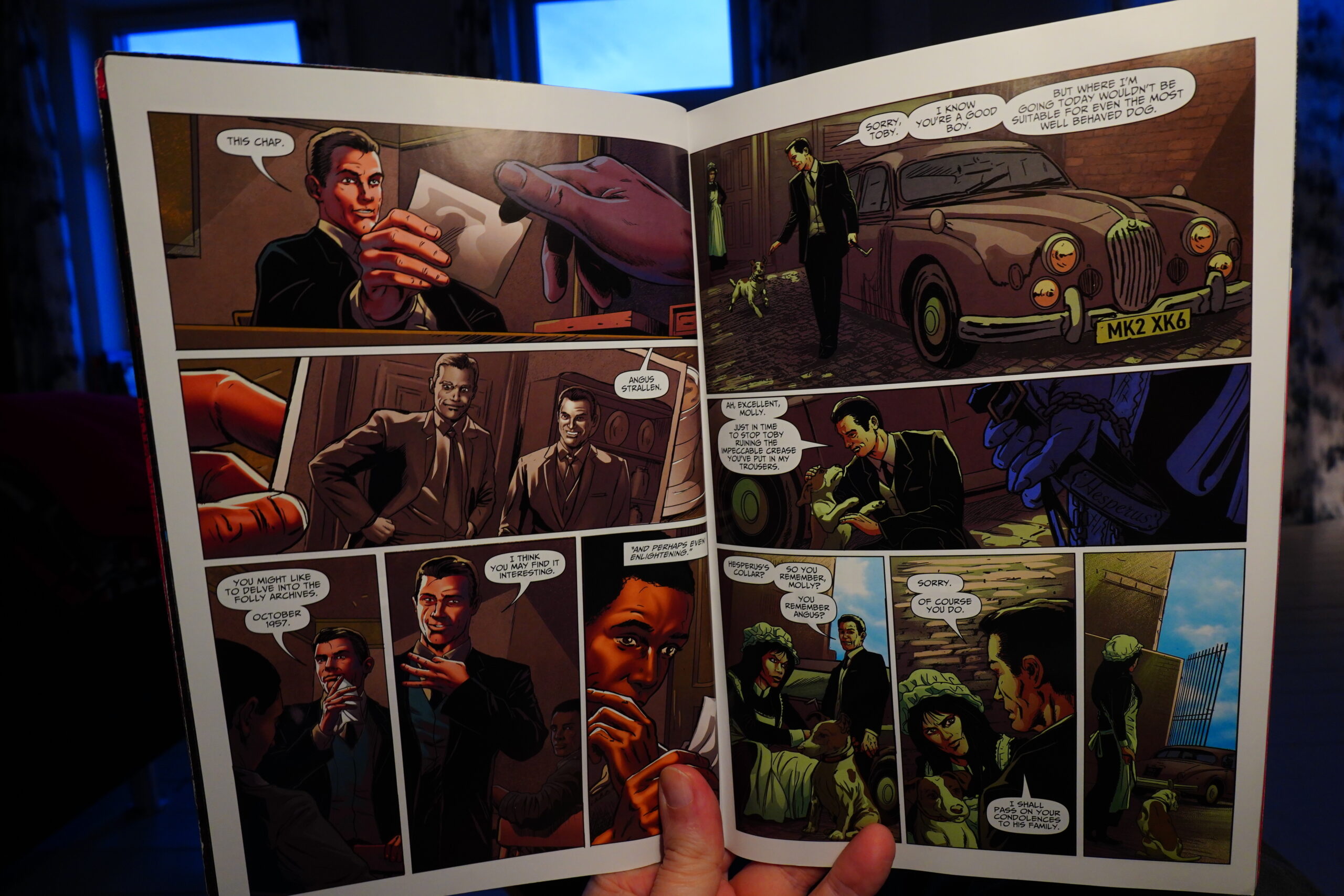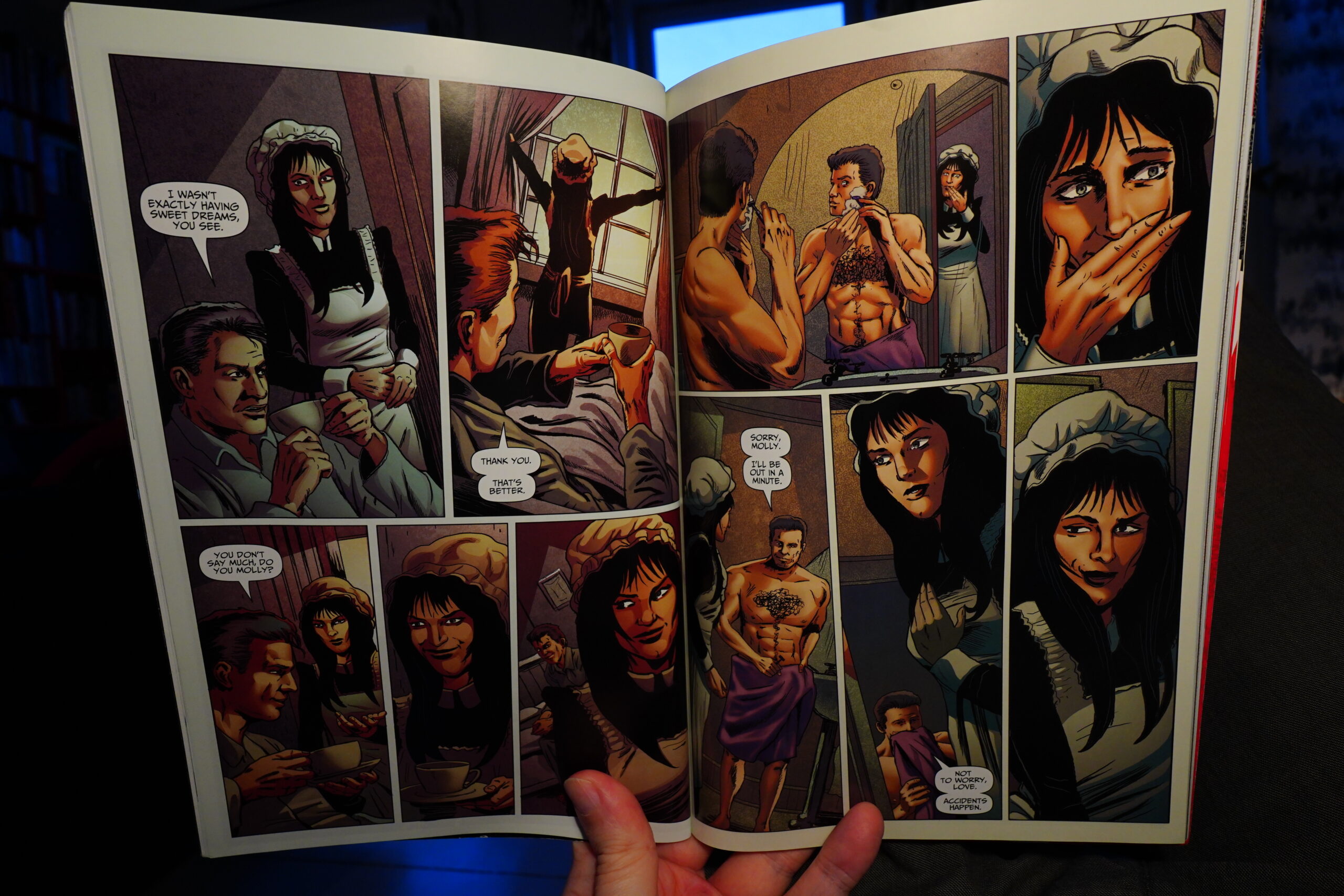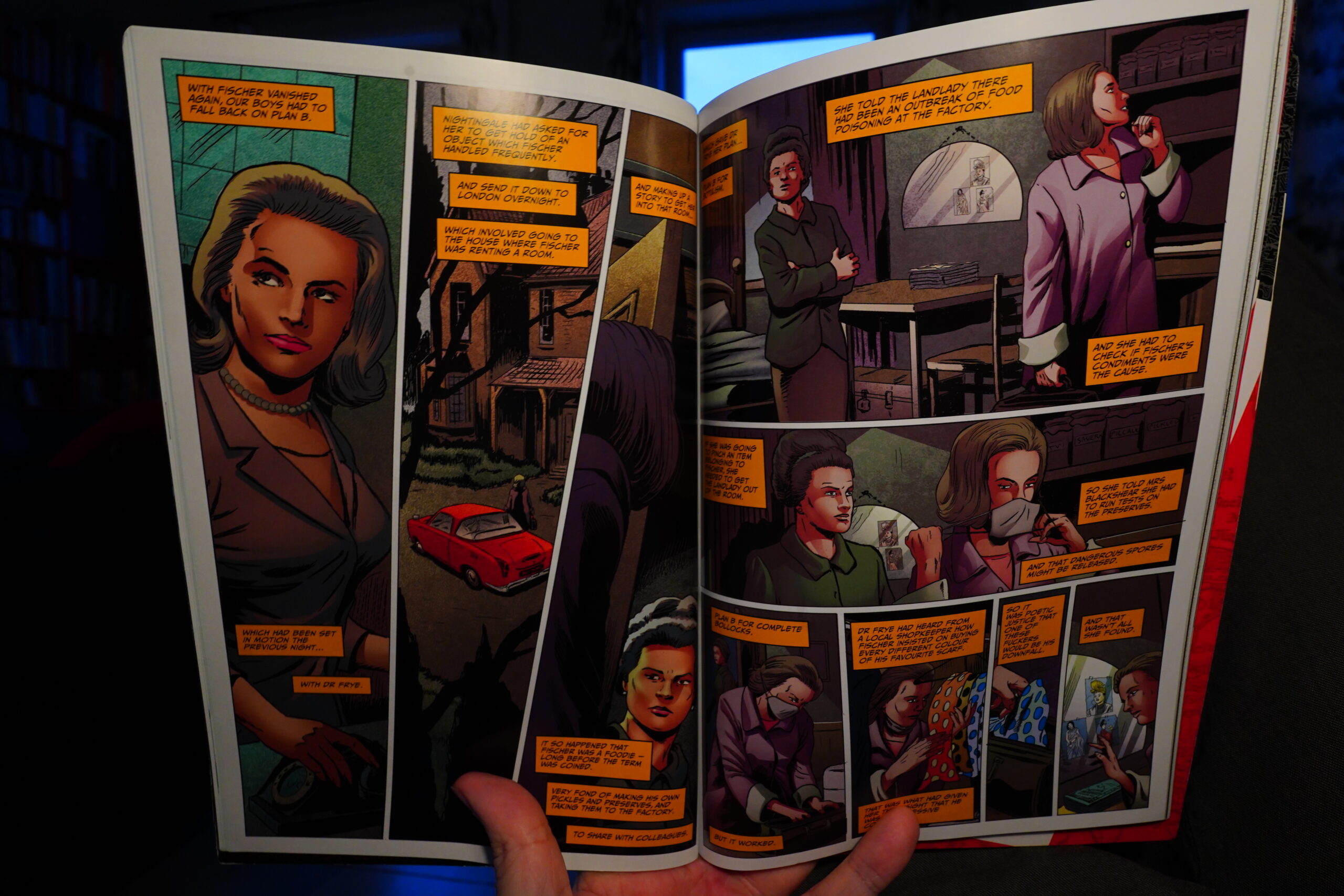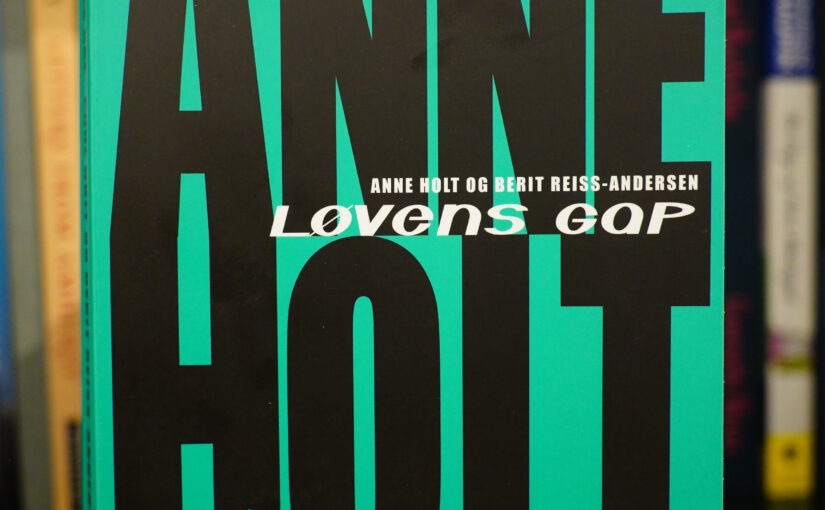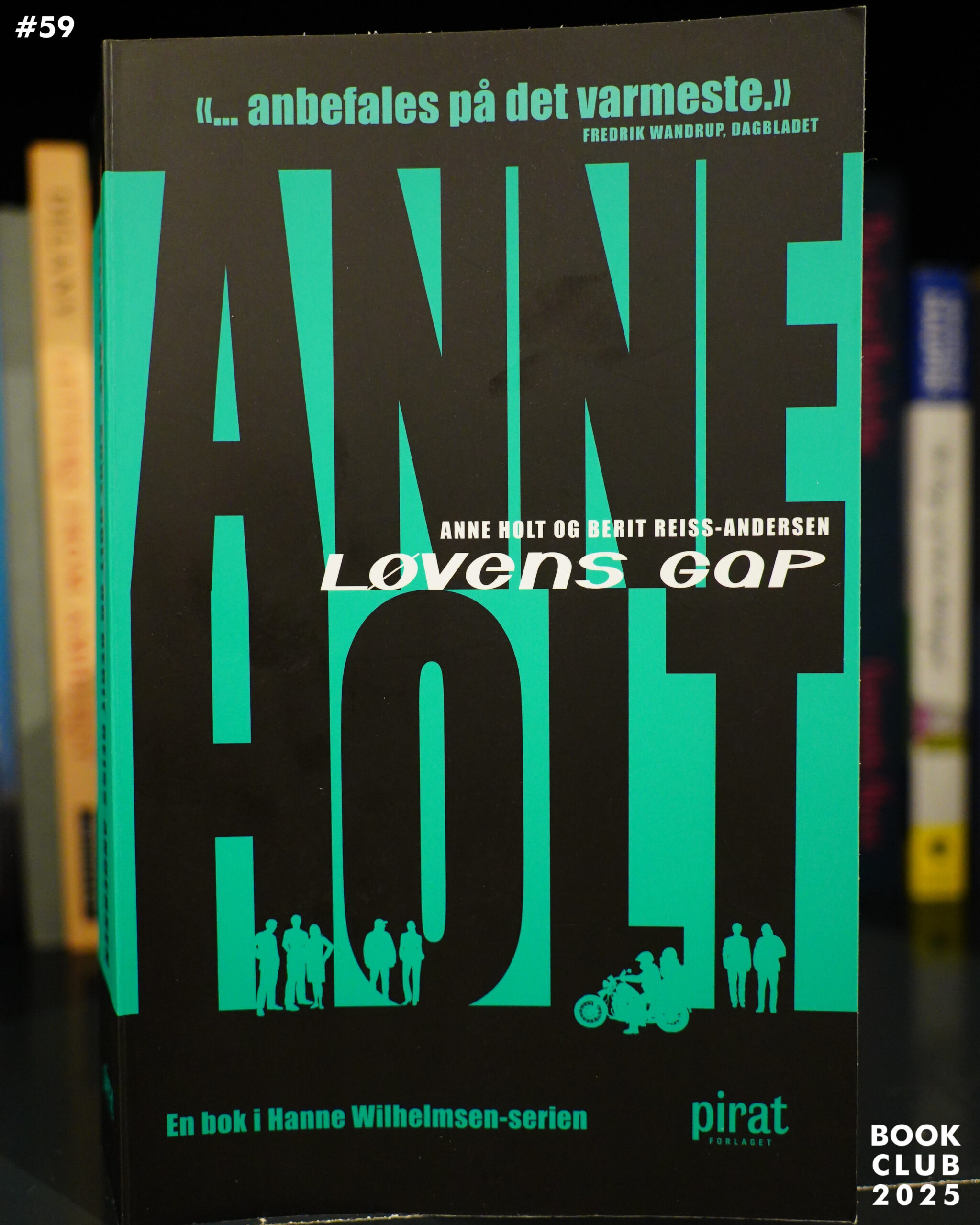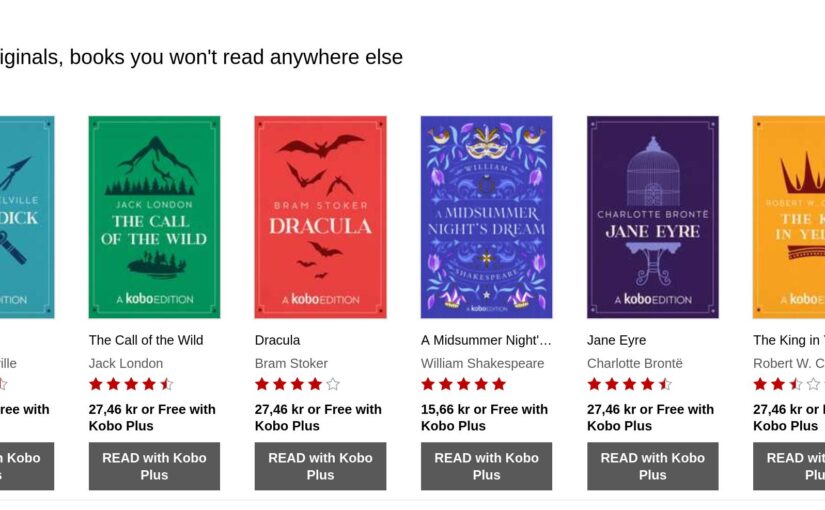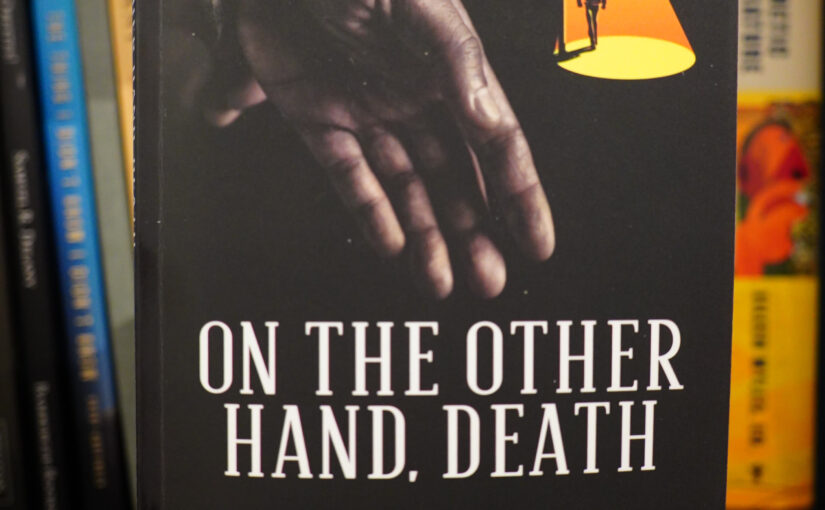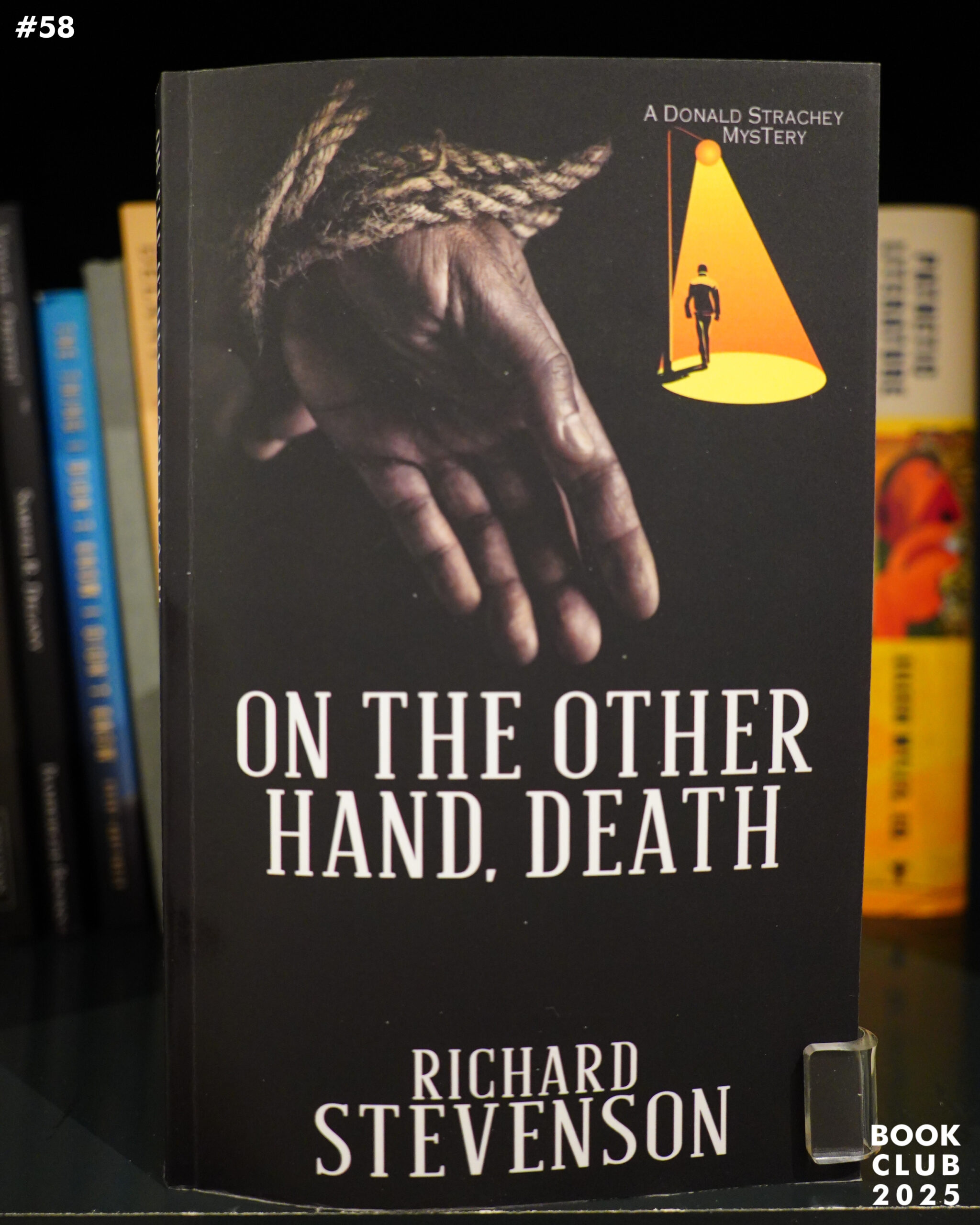It feels like it’s been months since I last read some comics, but I see that it was just two weeks ago. Time doesn’t fly!? Anyway: Comics day. And for music today: Music from 1996 only. 1996 was a good year, I think.
| Vinicius Cantuária: Sol Na Cara |  |
13:23: The Test No. 68 by Blaise Moritz
So this is a long-running mini…
The format is unique — it’s printed on super thin paper, so you get tons of bleed through. So it’s only printed on every other page, which means that this is super duper brief.
I like it, though — it’s intriguing.
13:28: Holy Lacrimony by Michael DeForge (Drawn & Quarterly)
I’ve been pretty disappointed with DeForge’s last two books (which were, if I remember correctly, collections of strips from his Instagram page (they read like it, anyway)). This one is much, much more readable.
It does have the whiff of allegory, but it’s pretty good.
| Arto Lindsay: Mundo Civilizado | 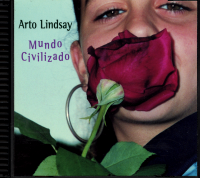 |
13:58: One-Eyed Want by Michael Banas
I got this from here.
I should stop fiddling with the white balance settings on the camera, but the light keeps changing here, and everything looks wrong…
Anyway, I like the art here — the weird colouring technique for the forest is really appealing.
The funny bits are funny, but the story (which is a religion/druggie/therapy speak mash up thing) didn’t really do much for me.
| Heidi Berry: Miracle |  |
14:46: World Within the World by Julia Gfrörer (Fantagraphics)
I’ve got quite a lot of Gfrörer’s minis, so I guess I’ve some of this before, but it’s great that there’s finally a collection. And it’s a pretty hefty one, because there’s been a lot of those minis.
Gfrörer’s pacing is just amazing. Love the artwork, too.
Most of these were originally printed on coloured paper, and they copy that here (but print the colour instead of using coloured paper).
Most of these stories deal with witches and stuff, and most are deeply unnerving.
| Pet Shop Boys: Bilingual |  |
Gfrörer also has an amazing ear for dialogue — it flows so well.
Anyway, this is a fantastic collection of incredible work.
| Arto Lindsay: O Corpo Sutil | 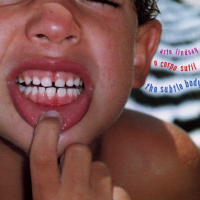 |
16:20: Convert by John Arcudi/Savannah Finley (Image Comics)
This, on the other hand, is just kinda awkward. The artwork is just a bit odd, and the storytelling is awkward, and the narration (it’s mostly narration) is clumsy.
And it’s a particularly interesting story, either.
So I guess it’s a typical Image book.
| Laurie Freelove: Songs From The Nineline |  |
16:52: Du må ikke slukke lyset! by Thomas Bugge (Cobolt)
Oops! This is a book for small children, I guess.
But it’s good. I really like the freewheeling artwork.
16:55: Roomies 1 by Lina Nordskjold (Cobolt)
And this is for older children. The artwork is very er computerey.
The story is pretty original — a kid is miserable at the boarding school, but then is taken by some aliens (by mistake), and then… and then things get kinda messy, storytelling wise, because there’s little plot development for like three quarters of this book. Instead we just spend most of the book learning about these aliens — it feels like the author wants to just tell us everything she’s invented about them instead of telling a story, really.
Perhaps a reader from the intended age group will find this enthralling, but it’s not really my thing.
| Oval: Systemisch |  |
17:15: Solace County vol 2-3 by J. Marshall Smith
I got these from here.
This is a series of yearly collections of work, so we get a mix of diary comics…
(Heh heh.)
… and other bits, including longer works.
It’s a compelling read — these pieces have a unified mood, even if they deal with many different subjects. It’s good.
17:48: Good Girl Laika by J. Marshall Smith
This is a really sweet book.
It’s funny and affecting.
| Oval: 94diskont |  |
17:52: Mörkt album by Coco Moodysson (Galago)
This is presented as autobiography — I mean, the protagonist’s name is the same as the author’s, and the protagonist is a cartoonist, and so on.
But I guess it’s not? The scenes seem too… er… too too… to be factual, and things end with (oops spoilers) the husband getting a lobotomy (because he was depressed), so I’m guessing it’s all fiction? Or perhaps just a bit exaggerated.
But it works from a storytelling point of view. The artwork’s basic, but expressive.
| Cat Power: What Would The Community Think | 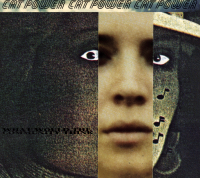 |
19:18: This Beautiful, Ridiculous City by Kay Sohini (Ten Speed Press)
This is extremely computerey… I mean, it’s not just drawn on a tablet but apparently 3D modelled (but with exaggerated foreshortening). It’s not very attractive, in my opinion.
And oh my god. It’s like reading a Powerpoint presentation, but bound into a book.
OK, I couldn’t take it any more, so I skipped ahead, and it’s just more of the same. The book is about how awesome New York is, and I’ve also got a very romantic view of Manhattan, so this should be a shoo-in for me, but it’s deathly dull. So I abandoned it.
19:37: Bottlecaps & Breadcrumbs by Travis Head
Oh, I really like this artwork. It’s got a 70s pop art thing going on, and also an underground sensibility… like Skip Williamson or something. Very attractive.
Oh, and this style is also wonderful! And the storytelling on this piece is unlike anything I’ve ever seen before, and it totally works — it’s an incredibly gripping read.
This is an amazing book — it’s autobio, but totally original.
19:56: Rivers of London: Action at a Distance by Cartmel/Williamson/Renne (Titan Comics)
I quite like Ben Aaronovitch’s novels, but I haven’t read any of the comics. I assumed they were adaptations of the novels, but then I read somewhere that they were original works, so I’m sampling one, and this is apparently one of the newer ones?
Oh, I assumed this was going to be written by Aaronovitch, but it’s not. So it’s basically just a comic book set in the Aaronovitchoverse…
The artwork here is also very computerey, and quite bizarre. Everybody has staring eyes, but what they’re staring at never seems to make sense. It’s like random clip art of staring people that has been drawn over in Photoshop.
And things rarely seem to make sense one a graphical level — like what is that door in the third-to-last panel attached to?
OK, this is just insufferable. *ditch*
| Everything But The Girl: Walking Wounded | 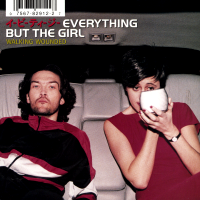 |
20:10: The End
And I think that’s enough comics for today.
